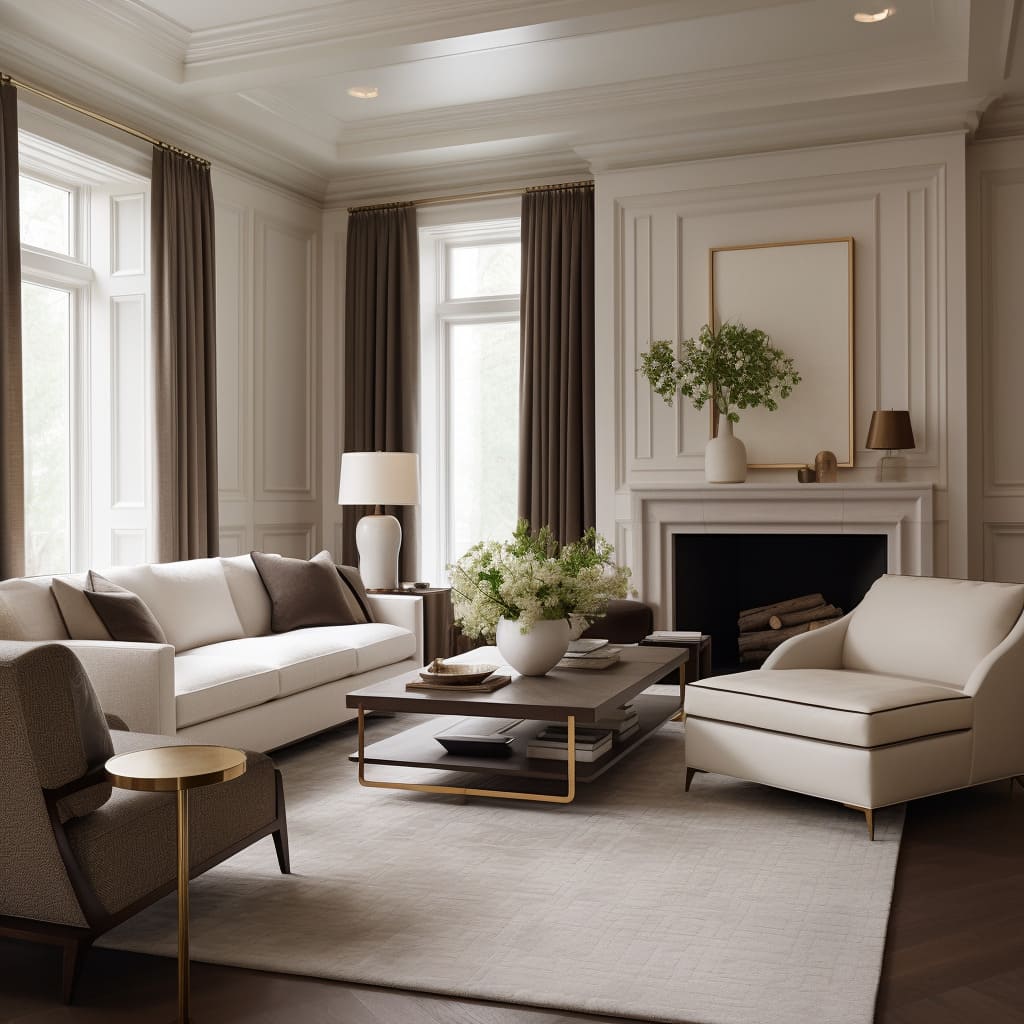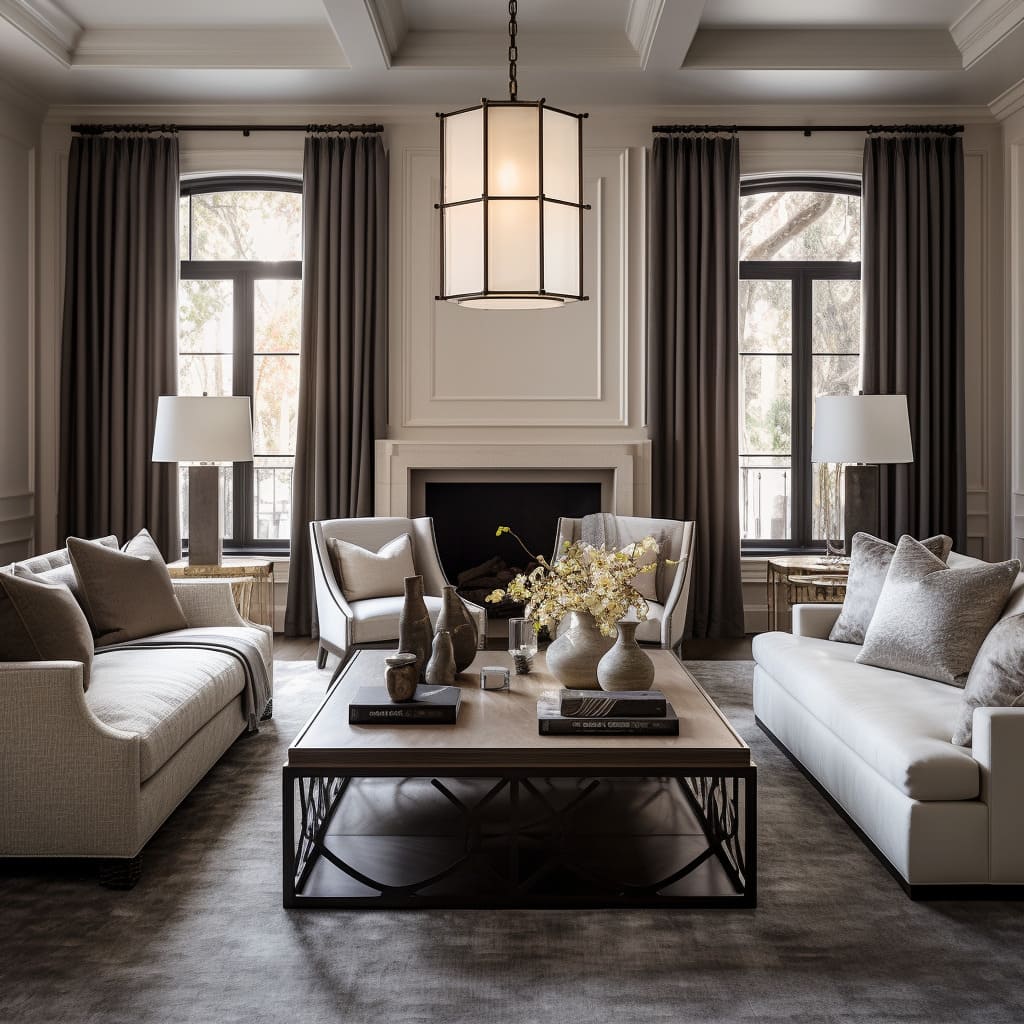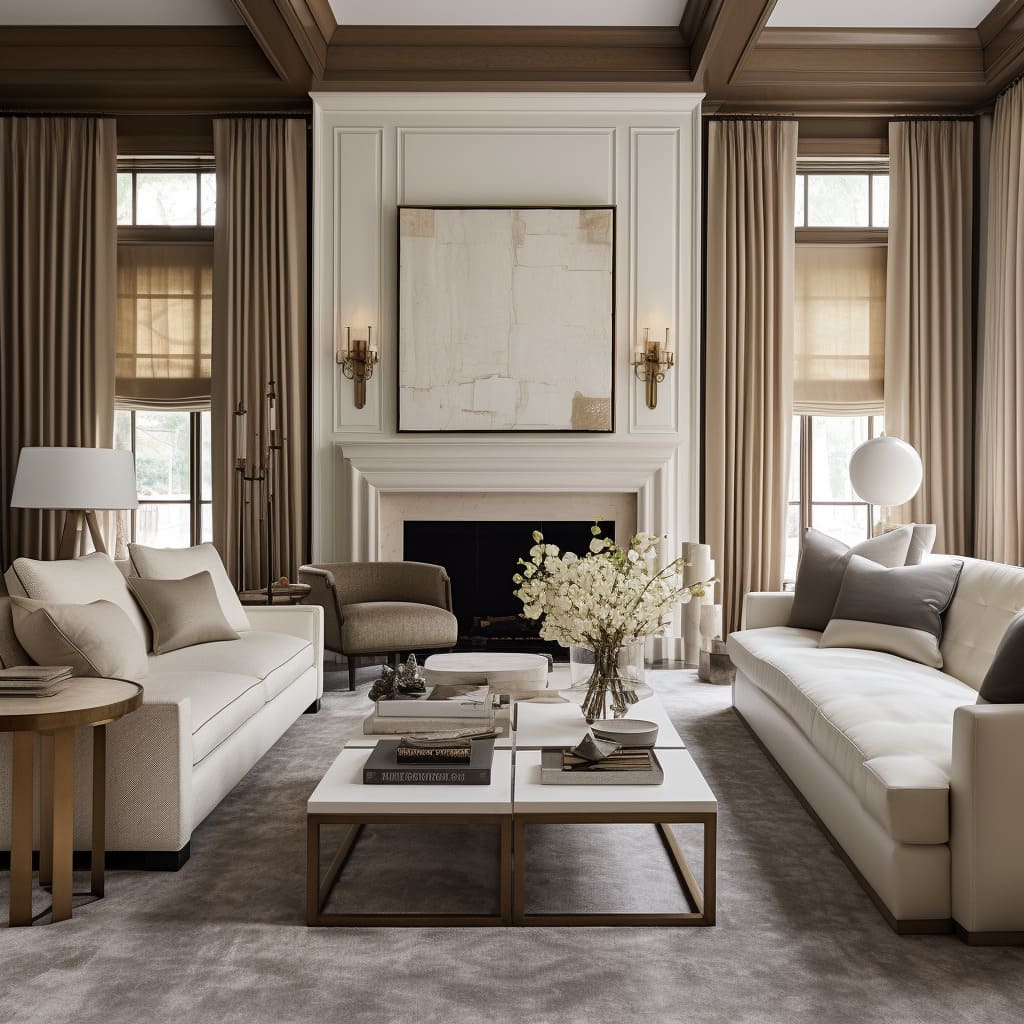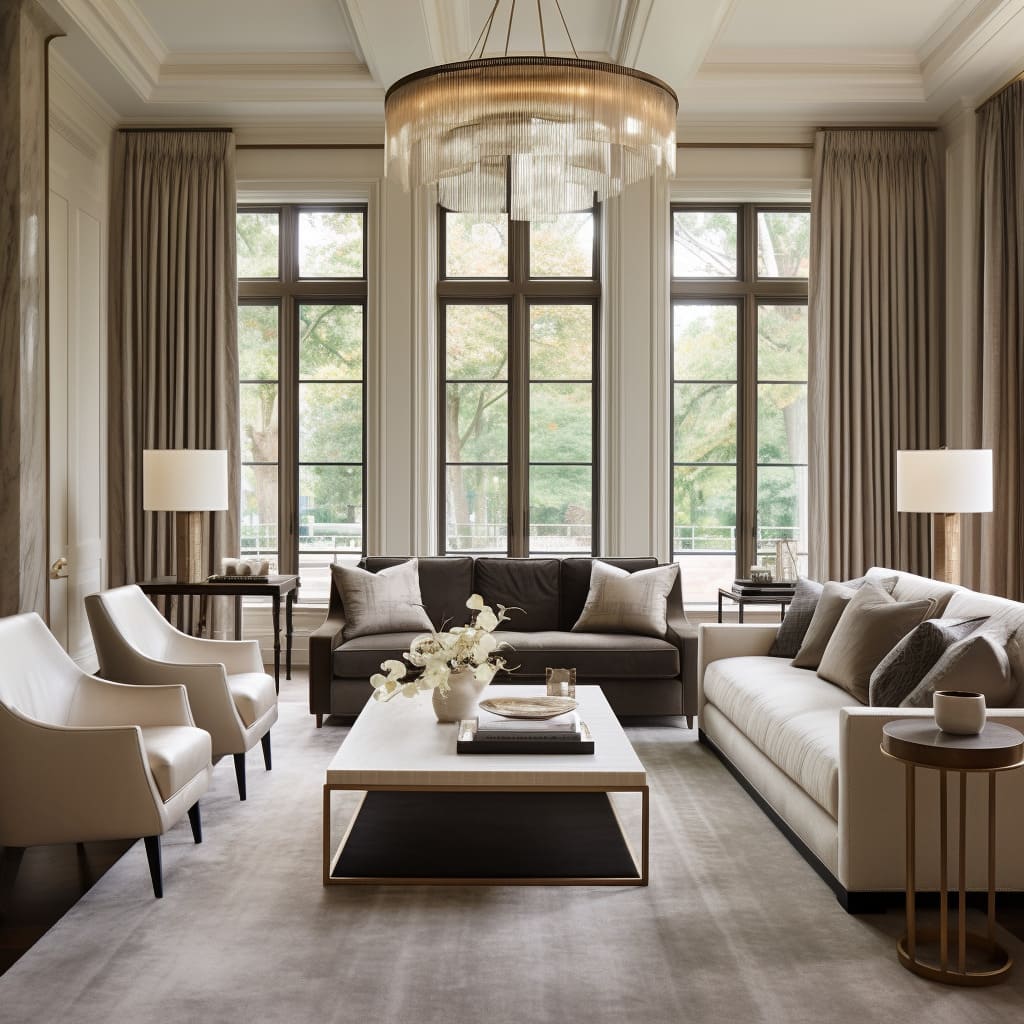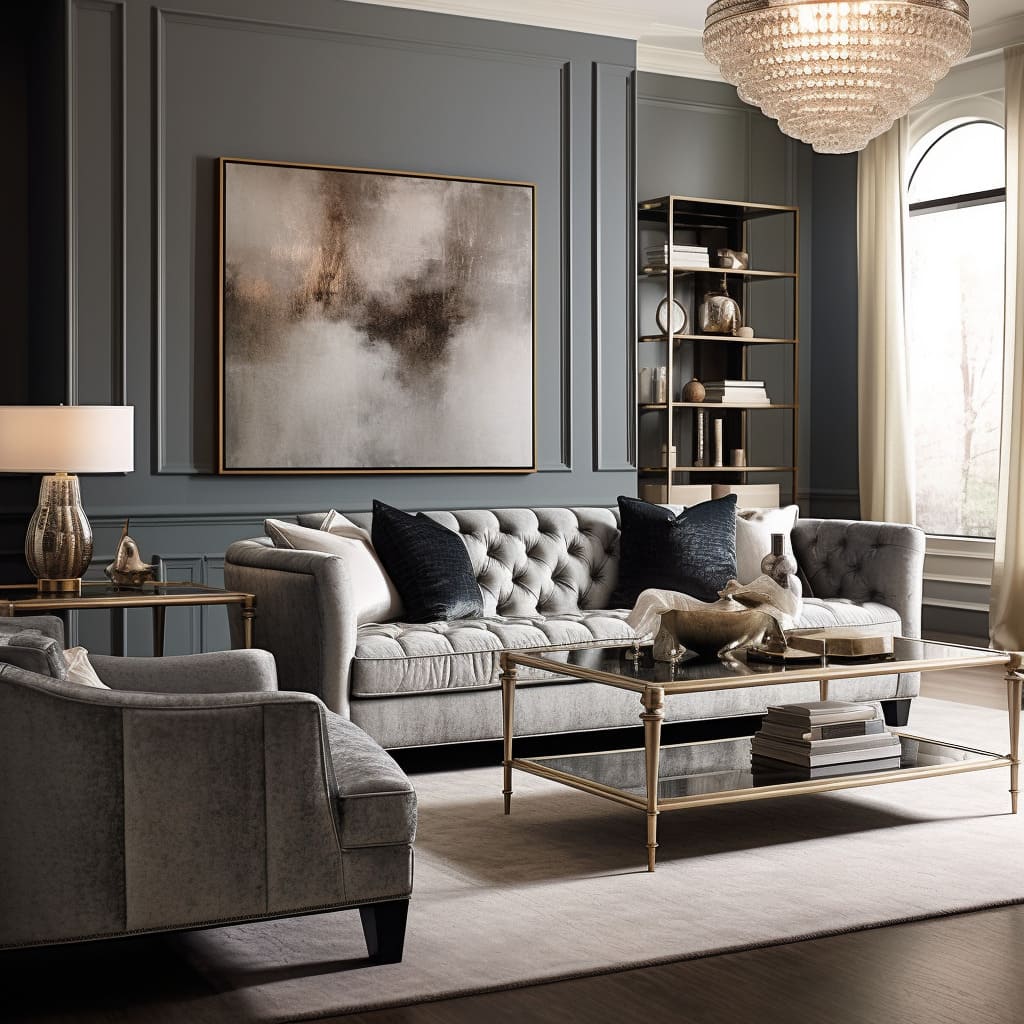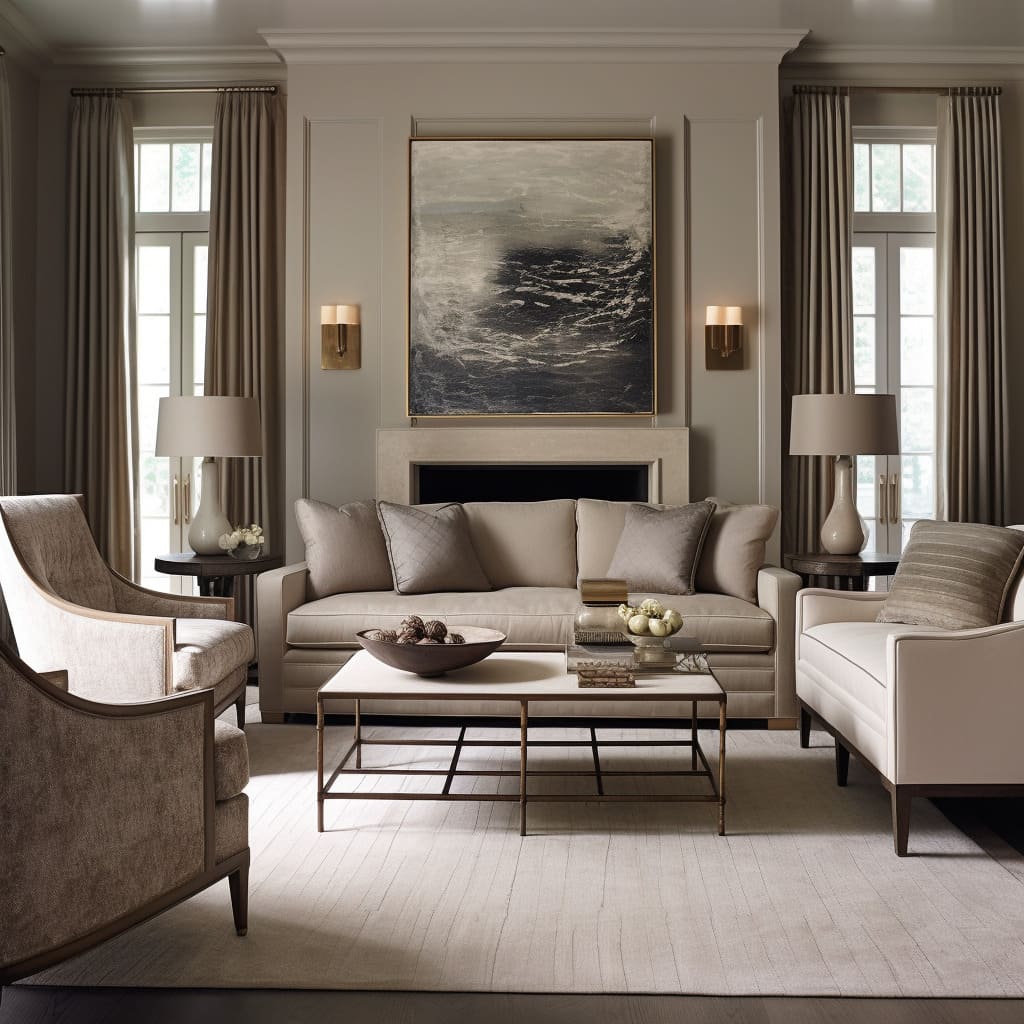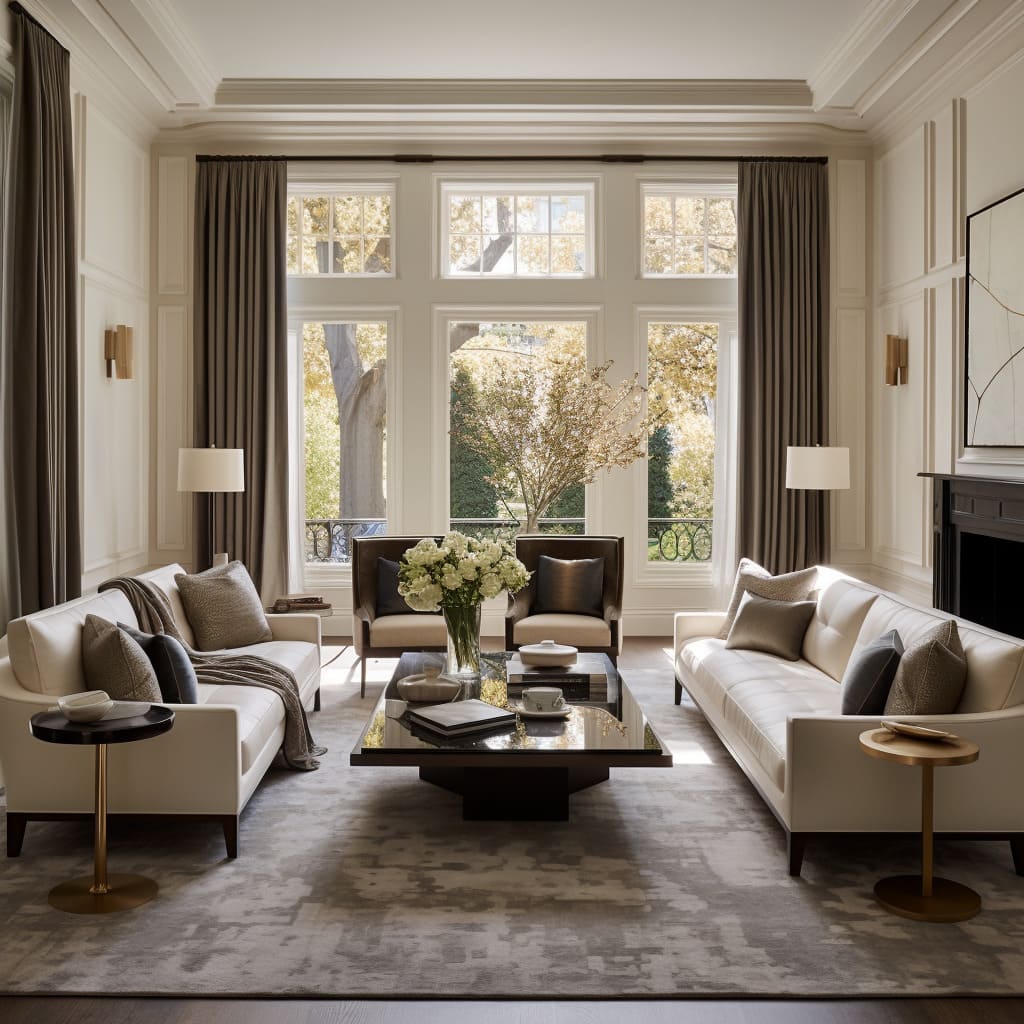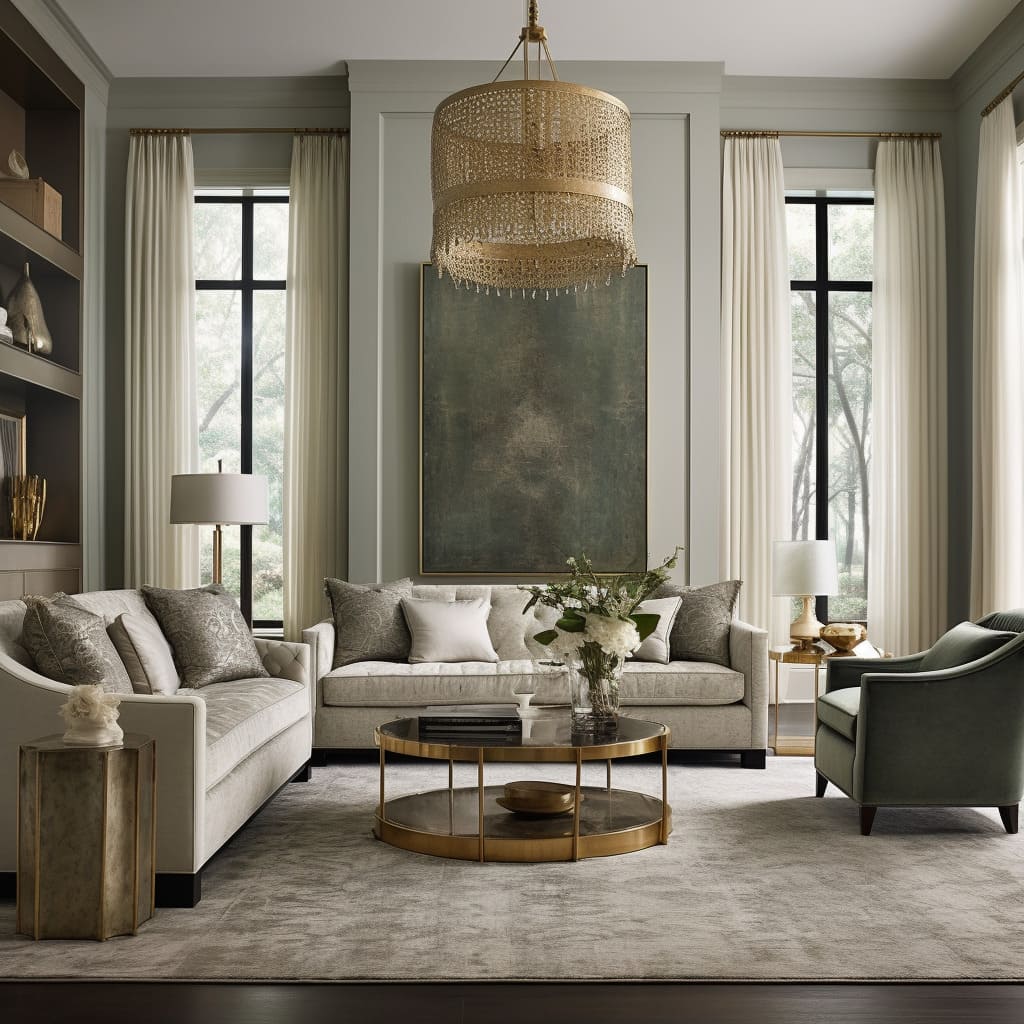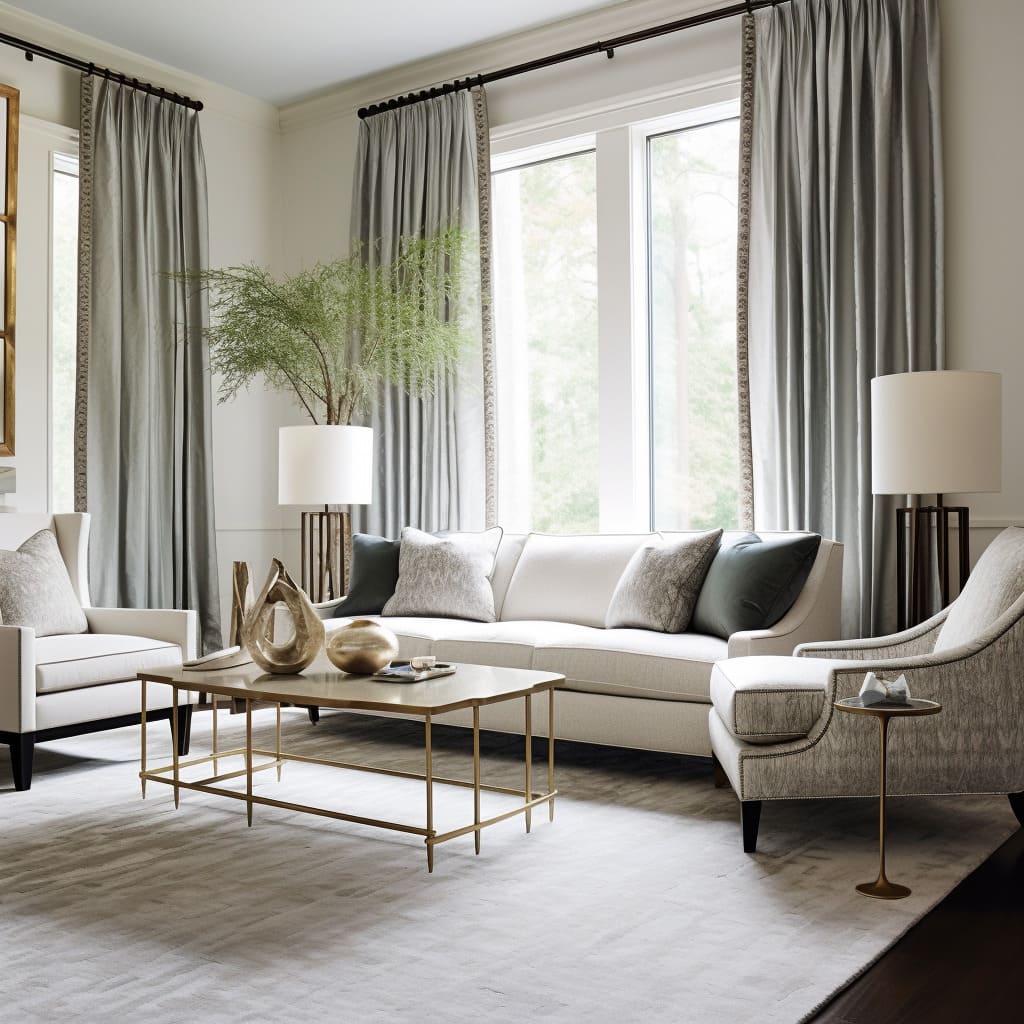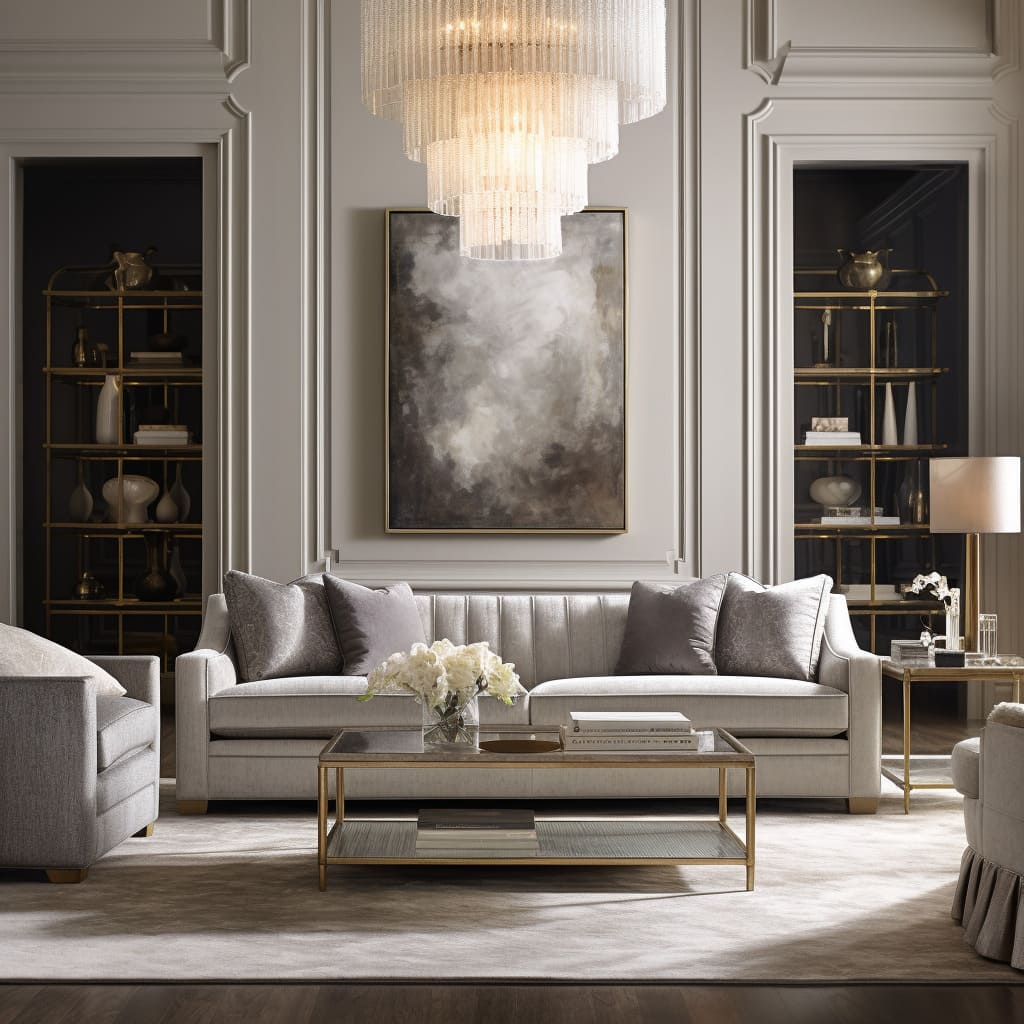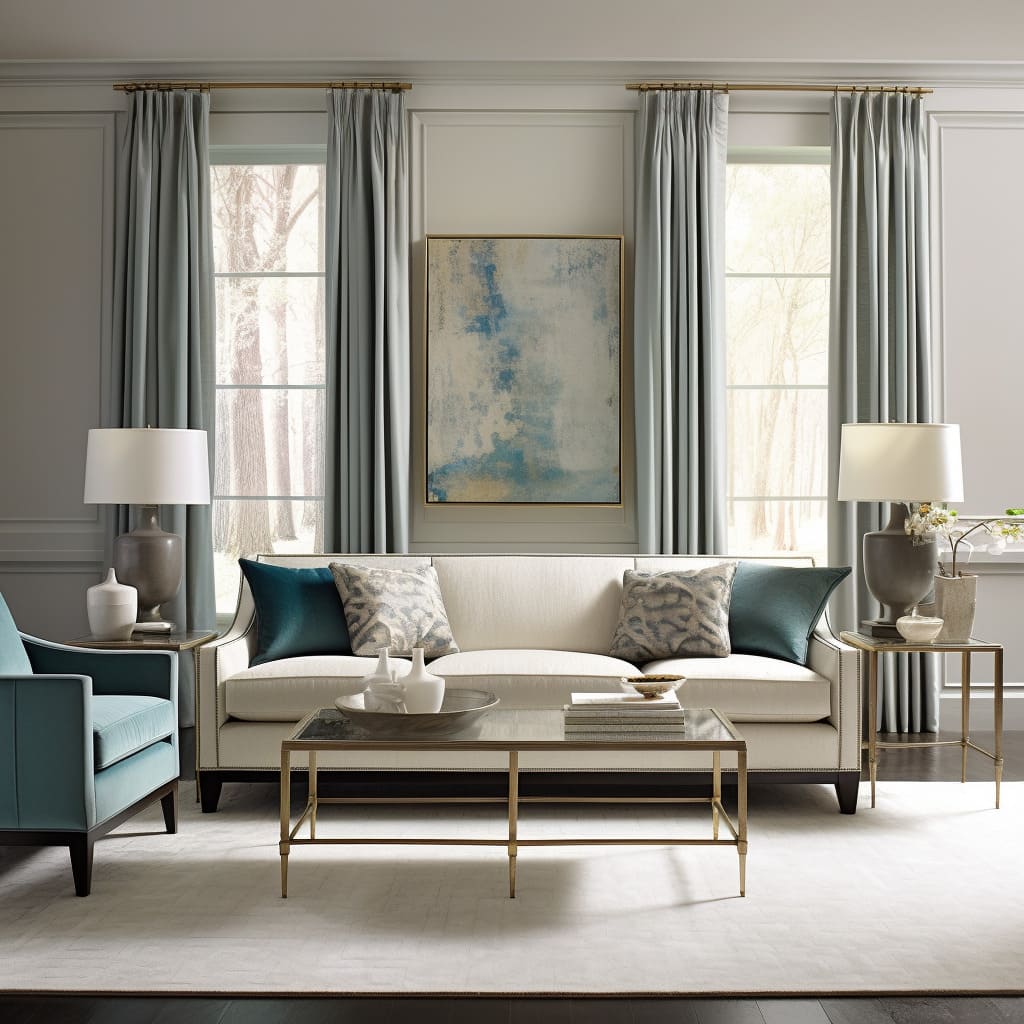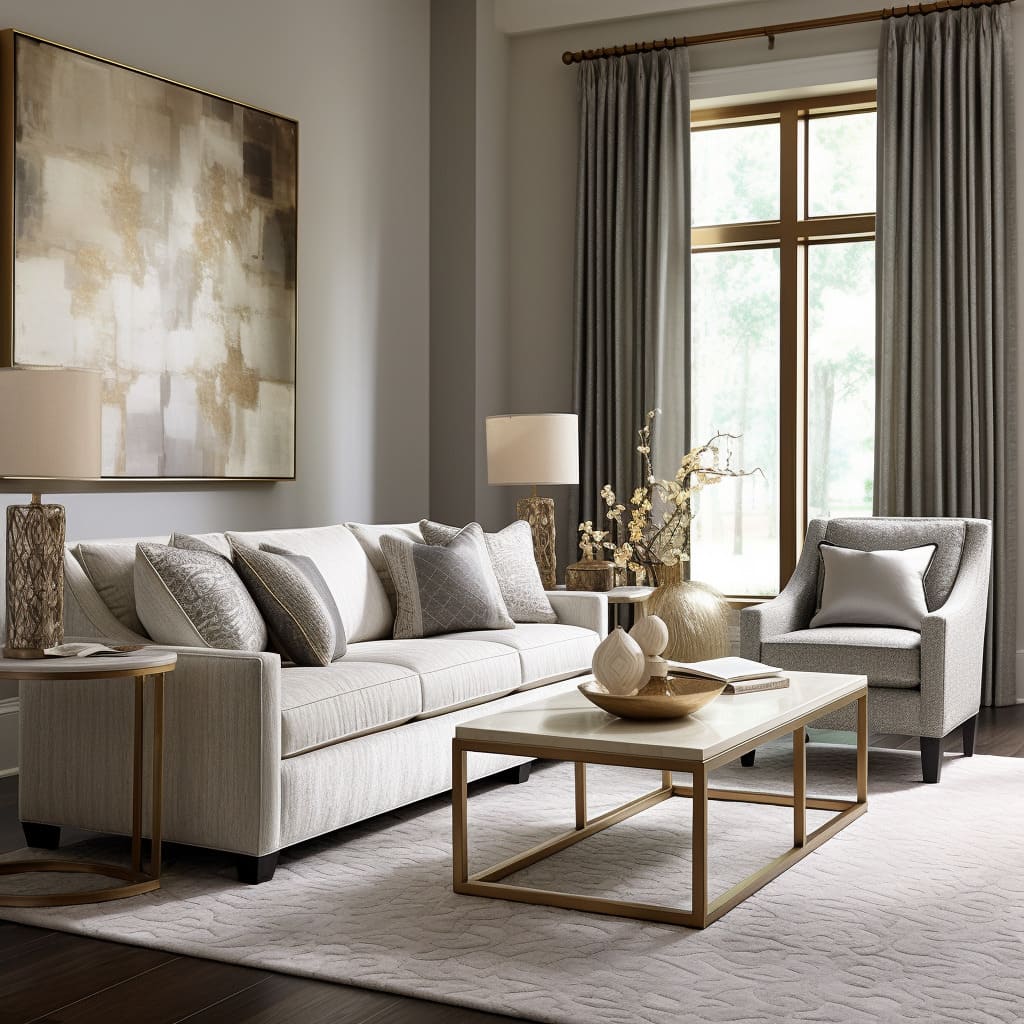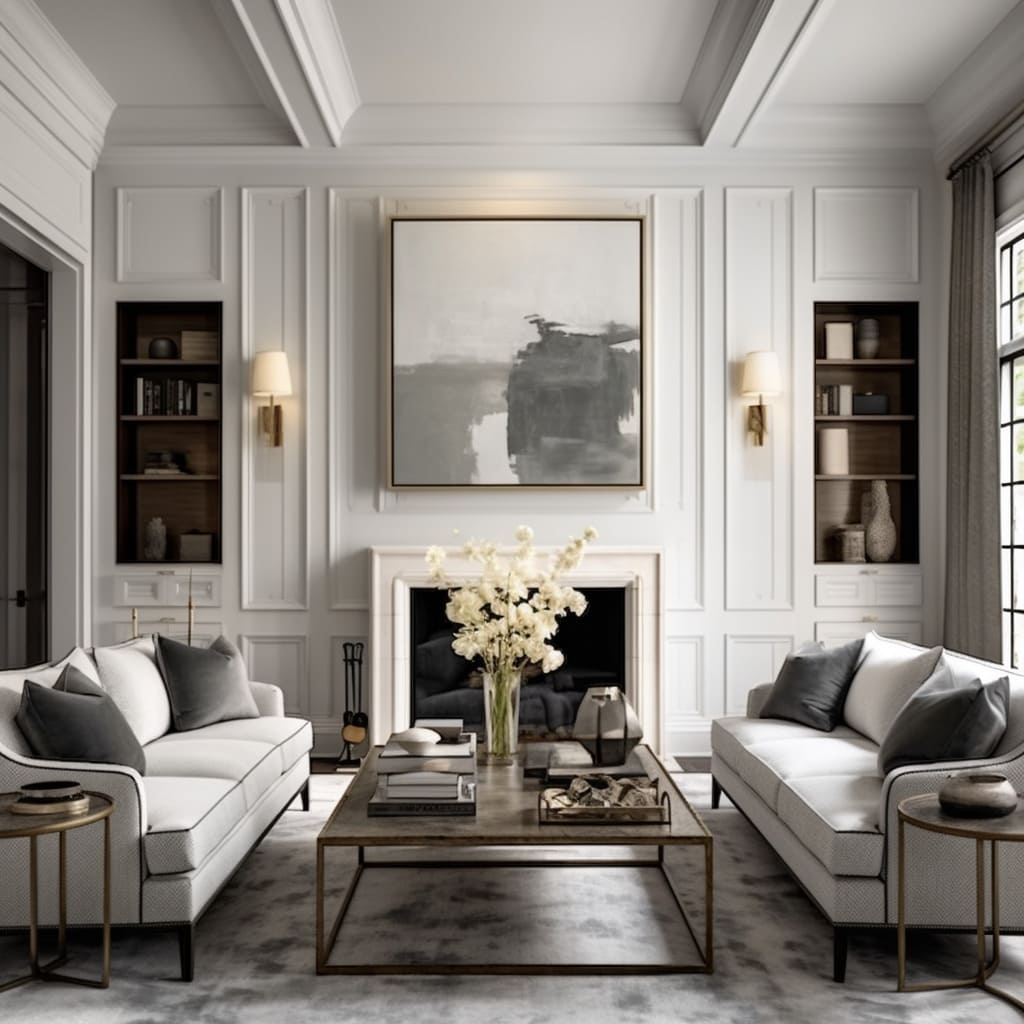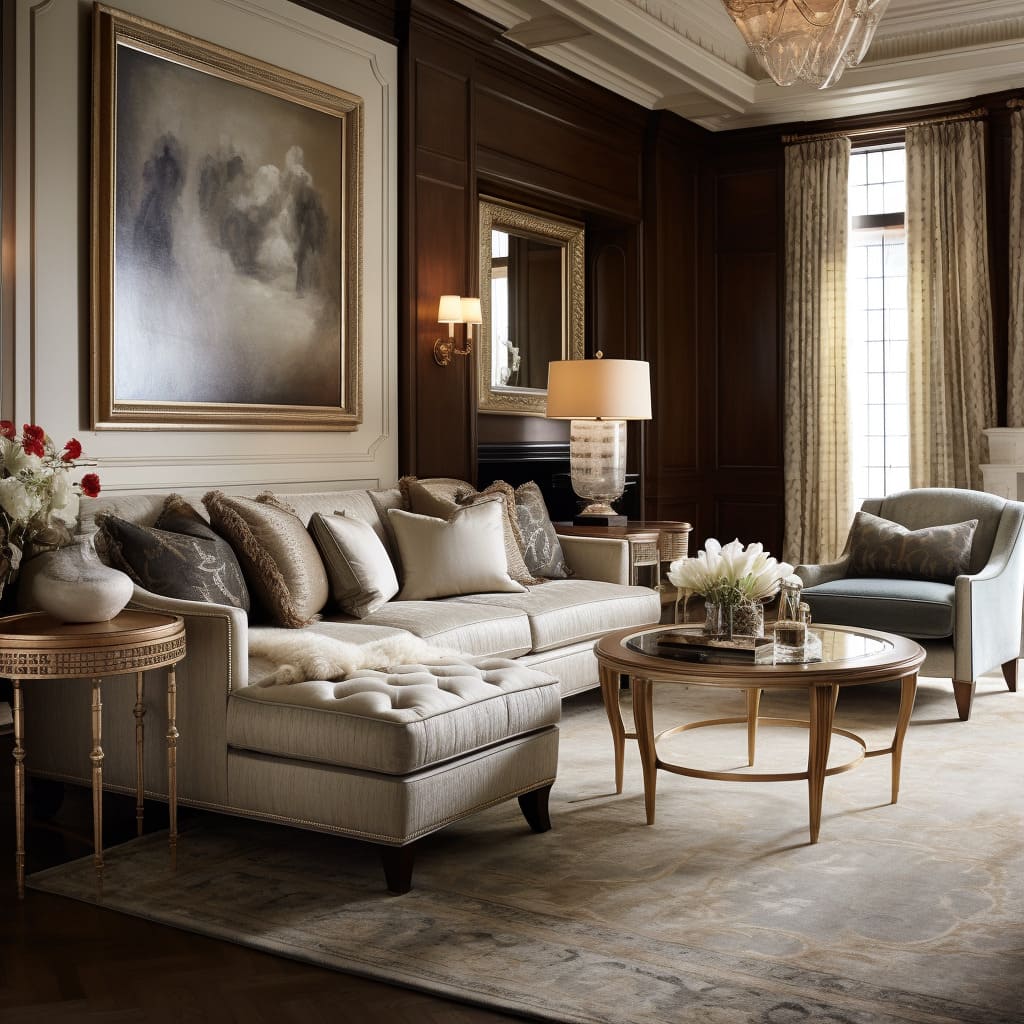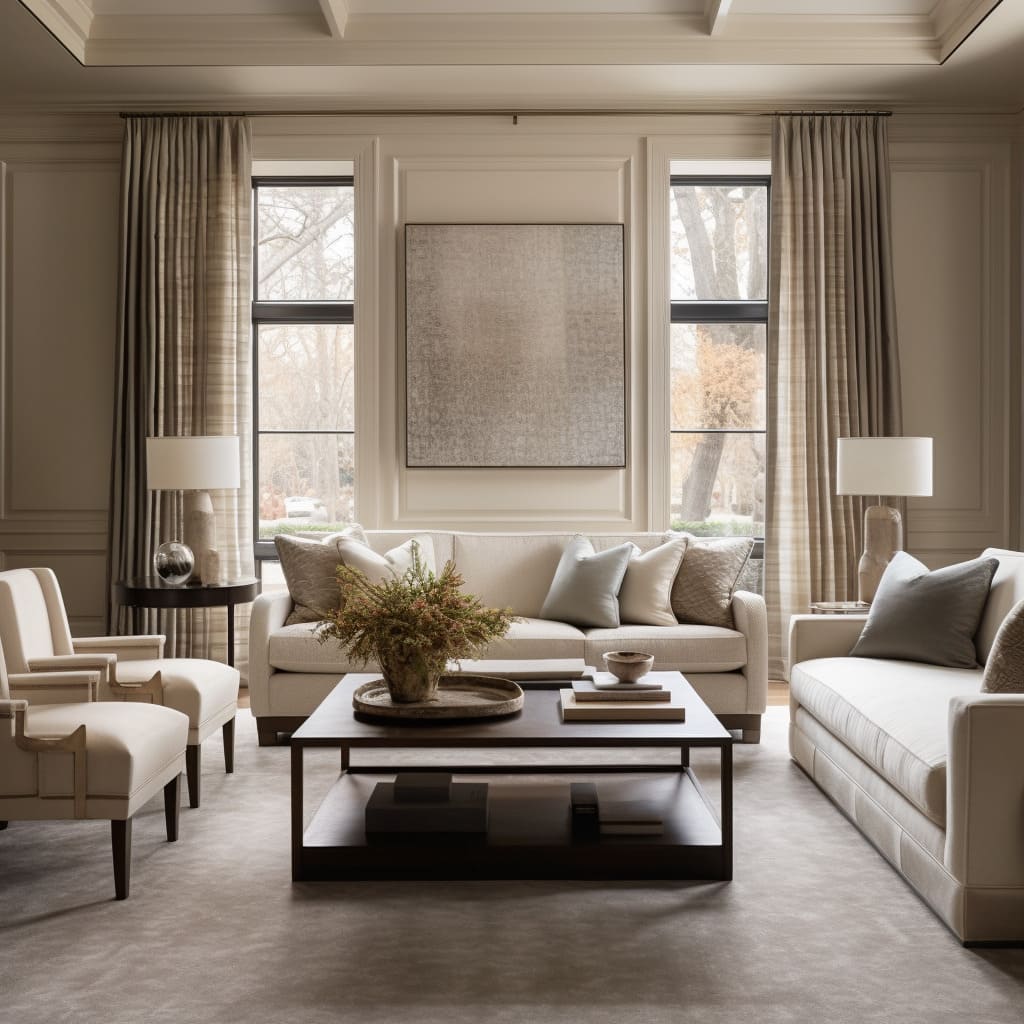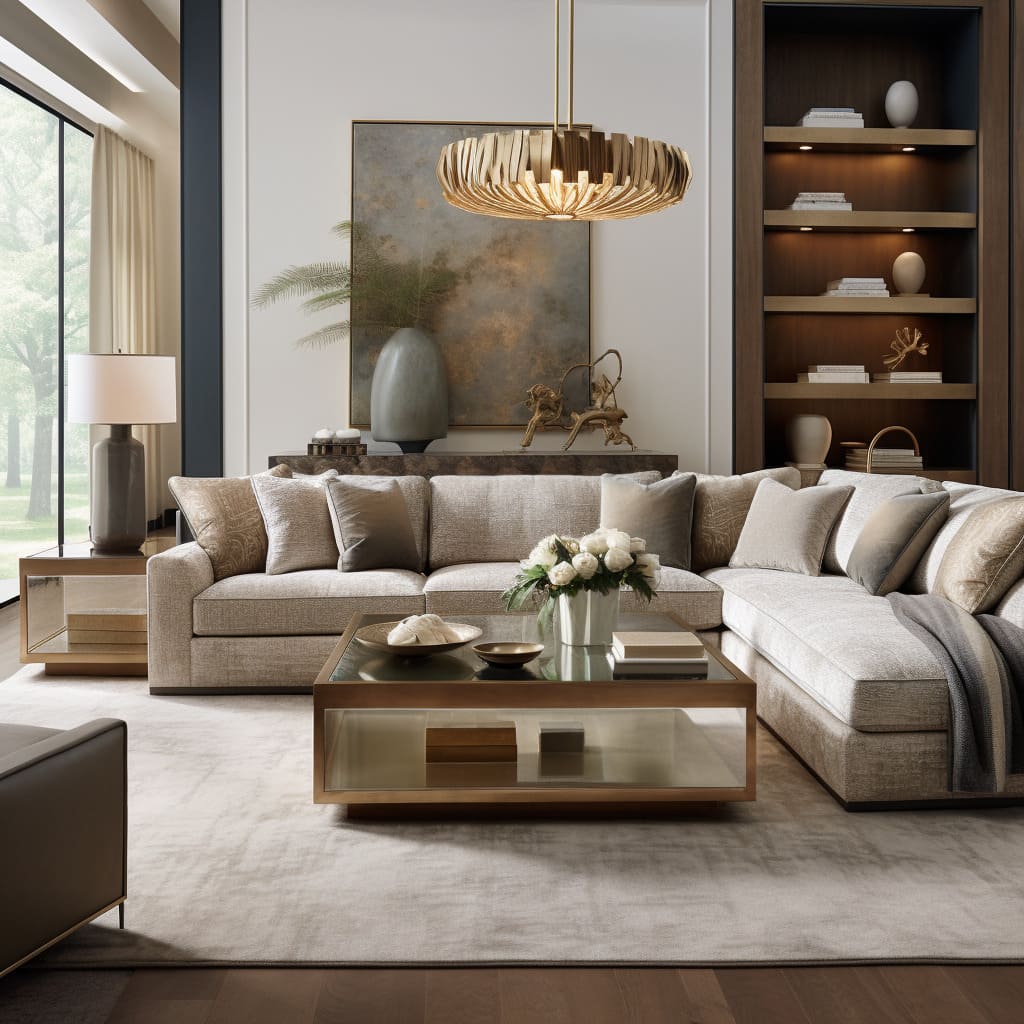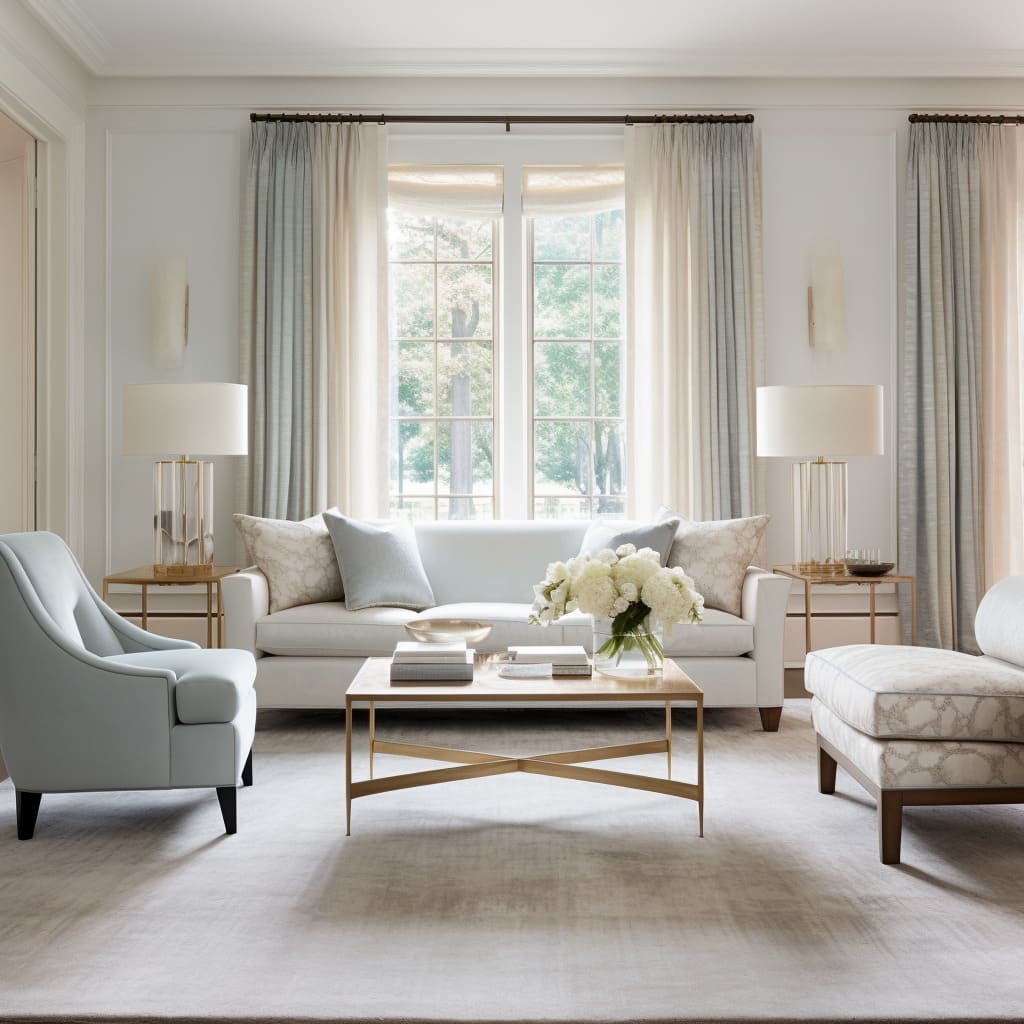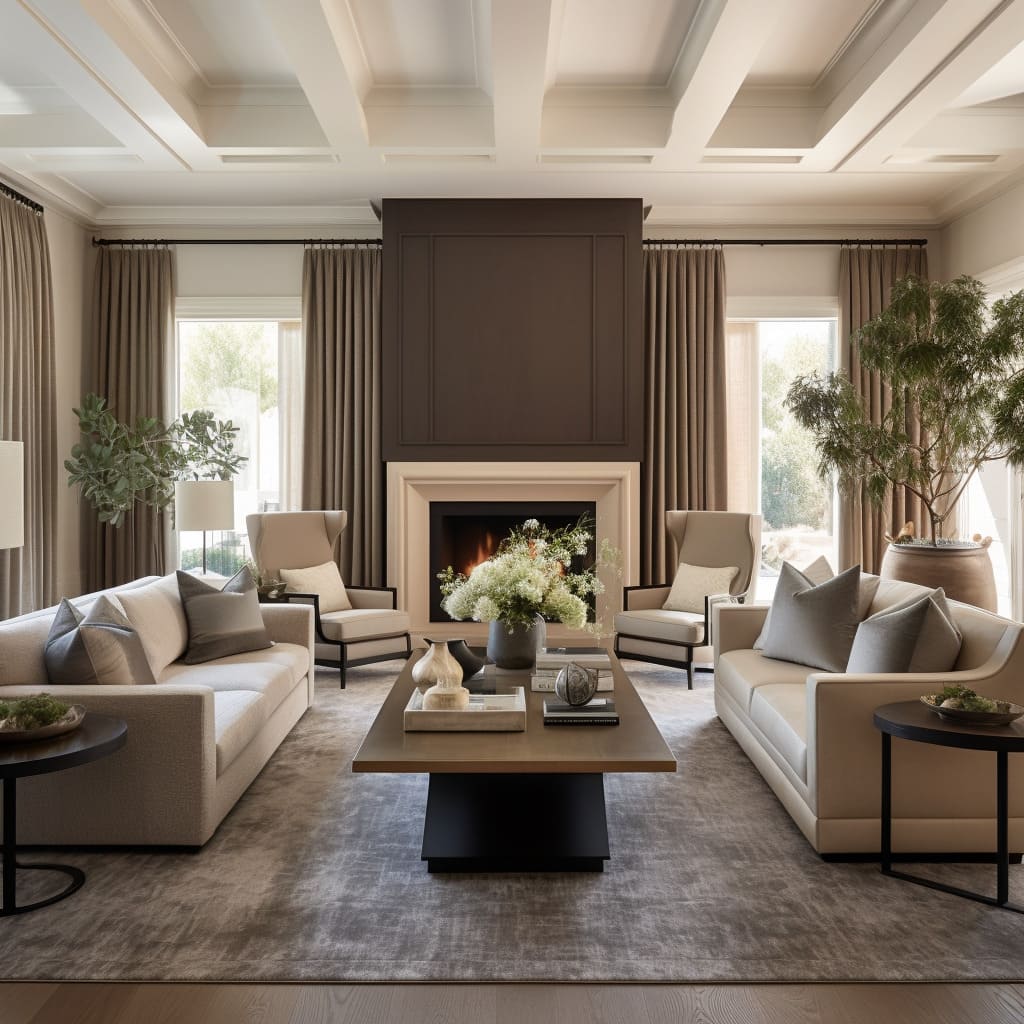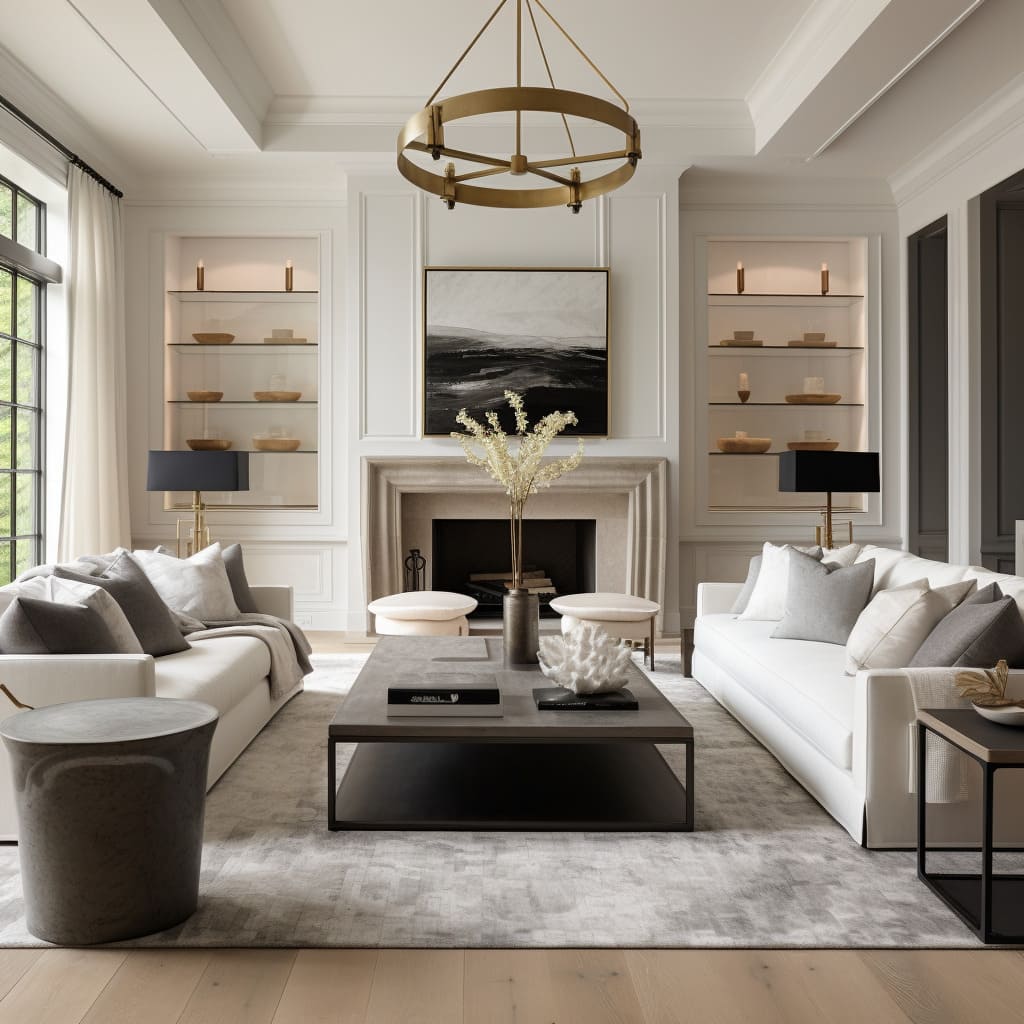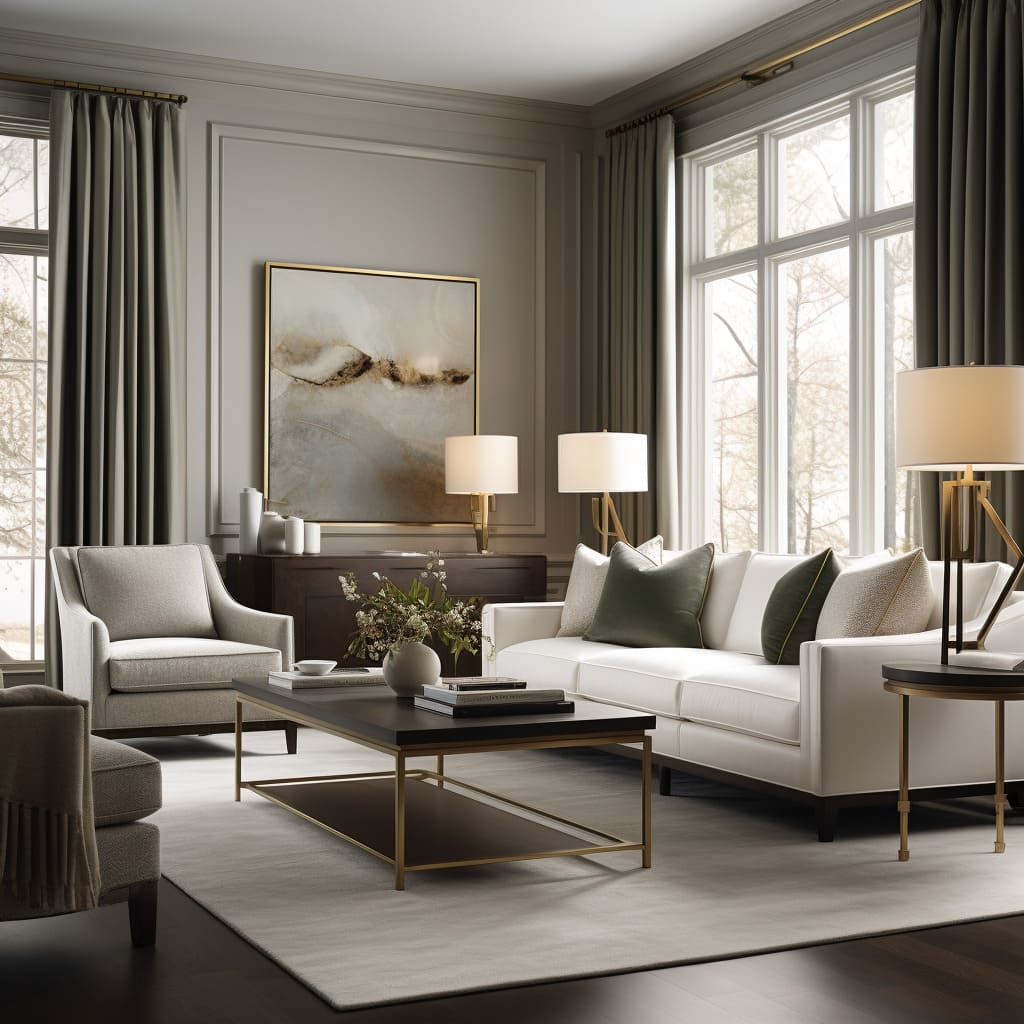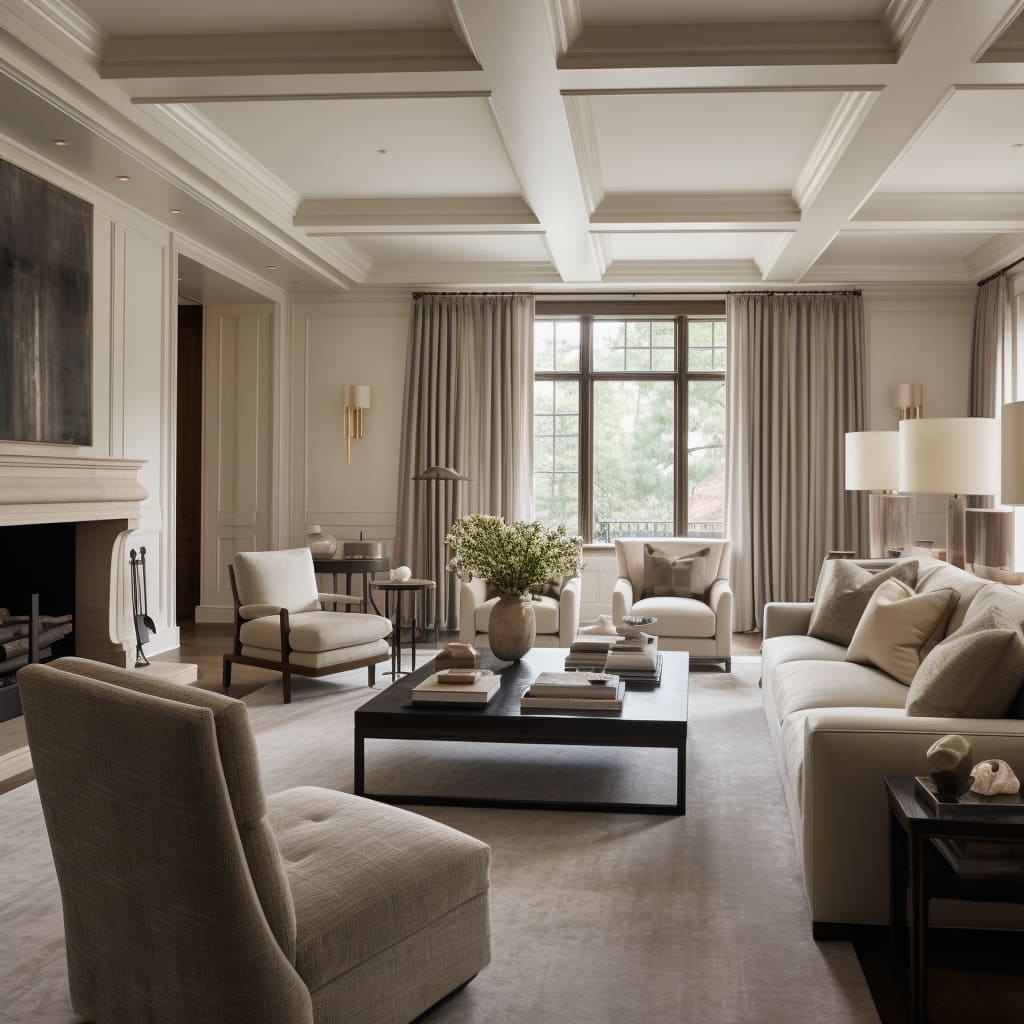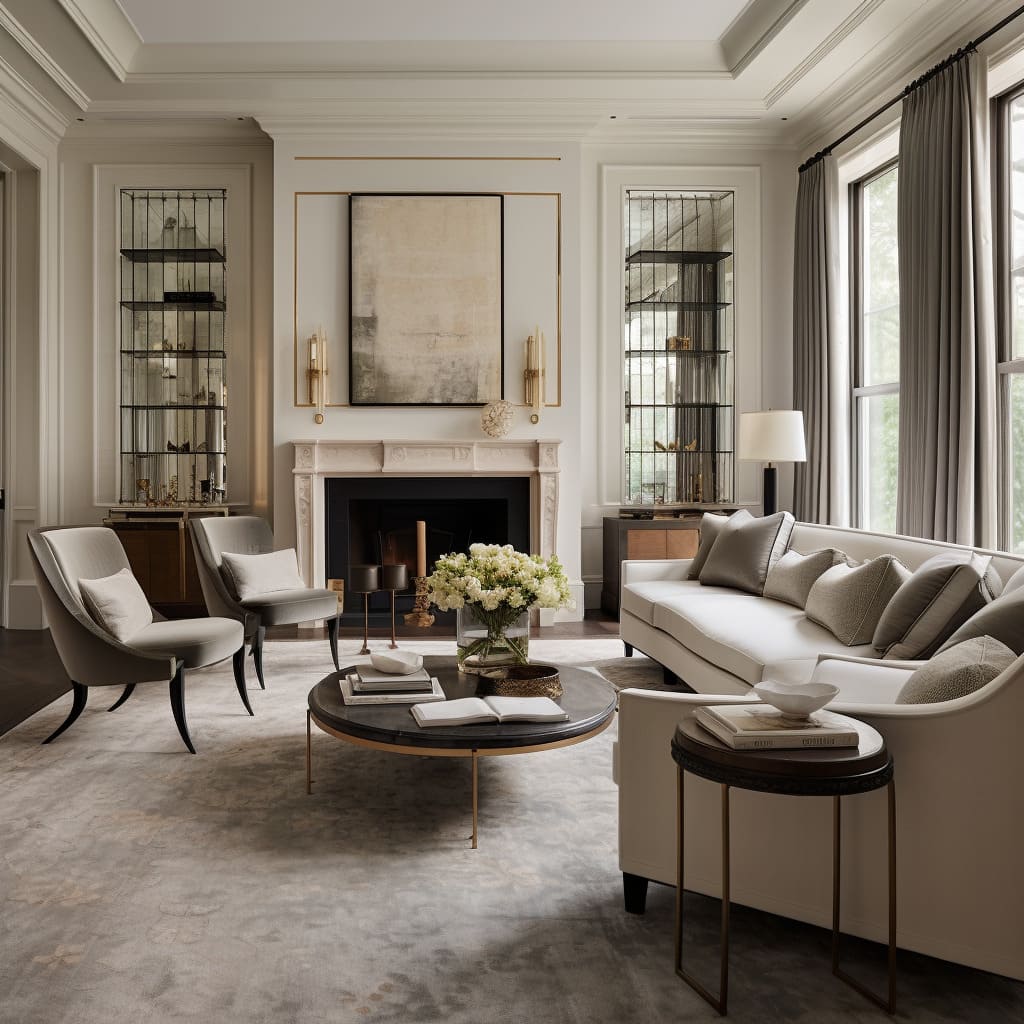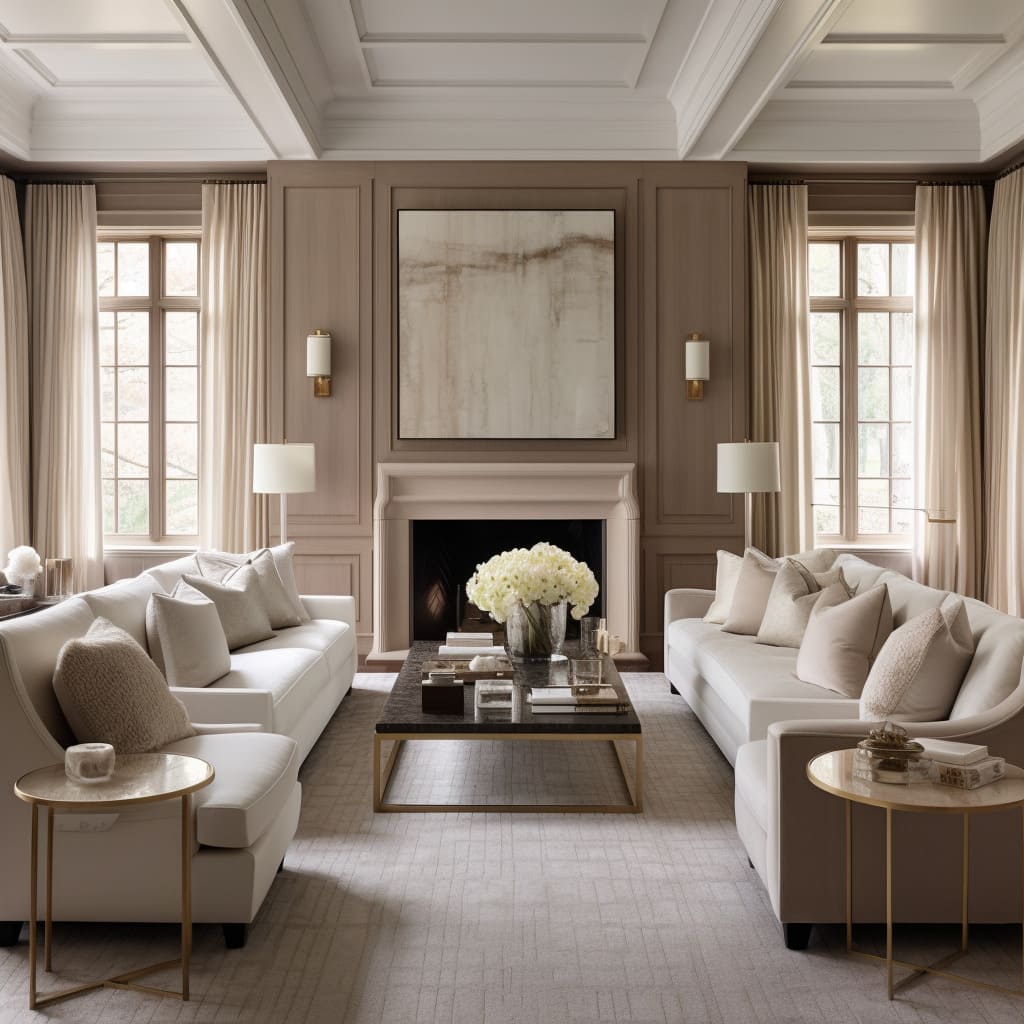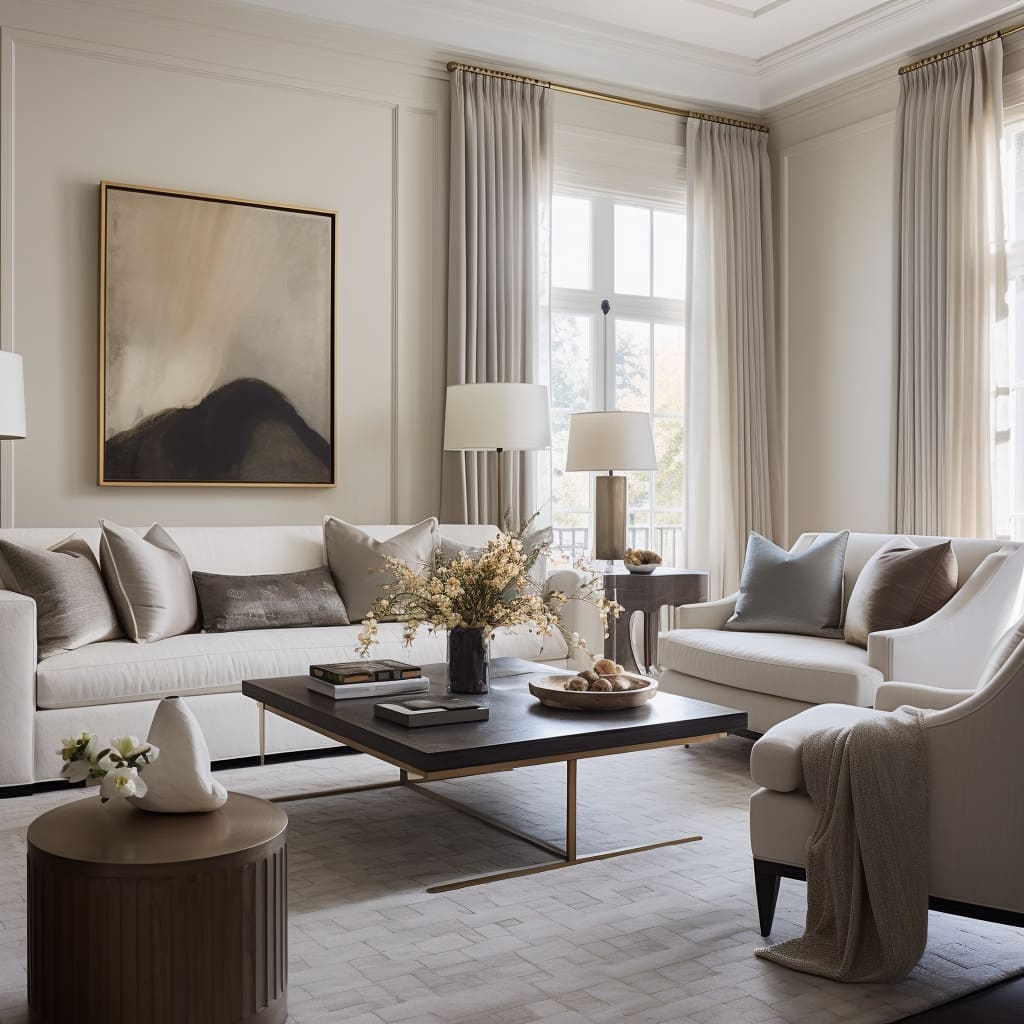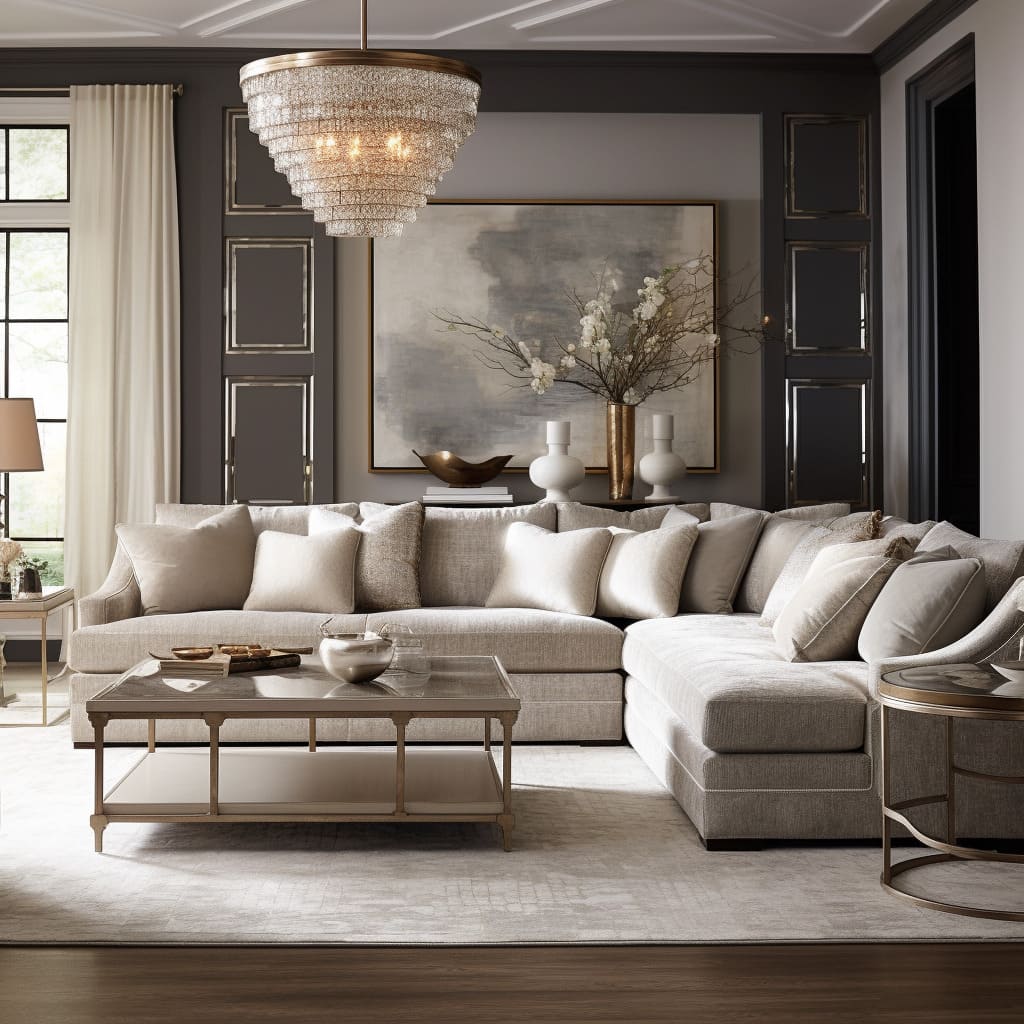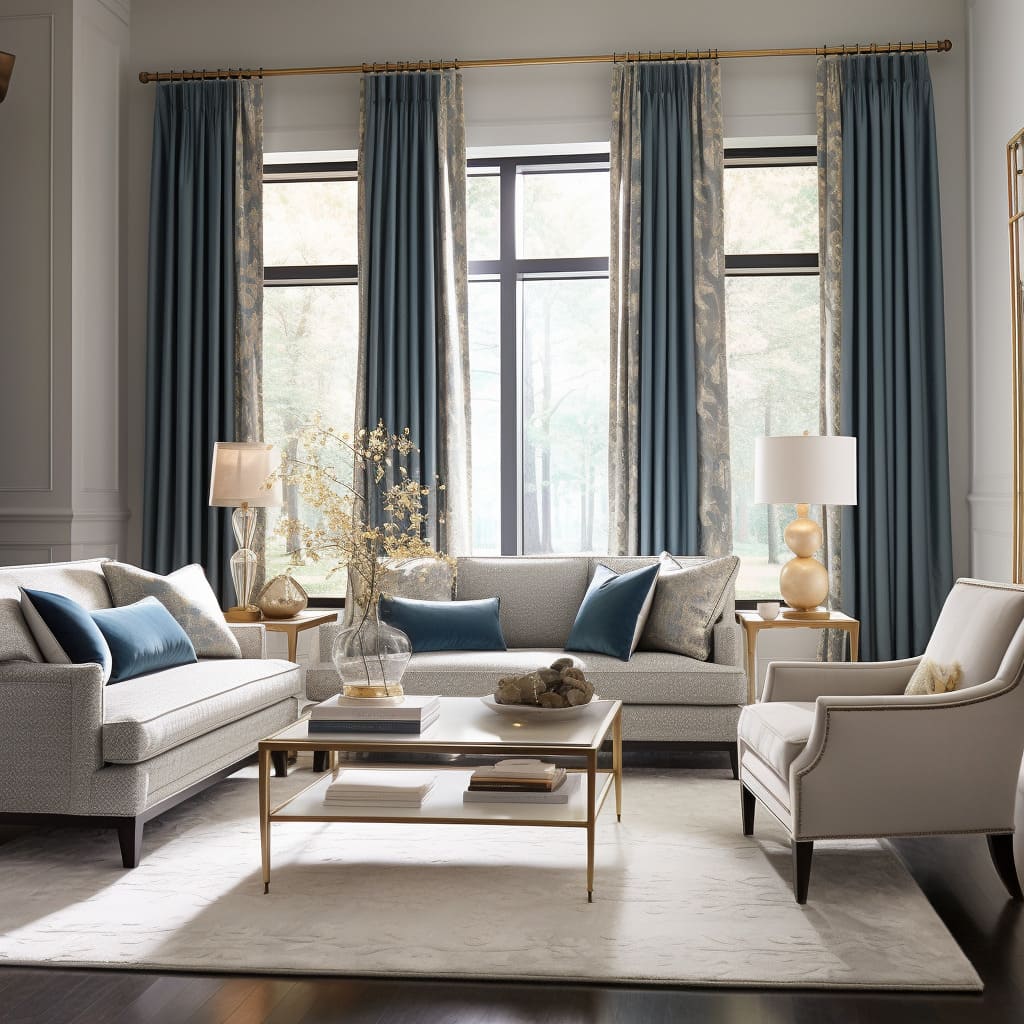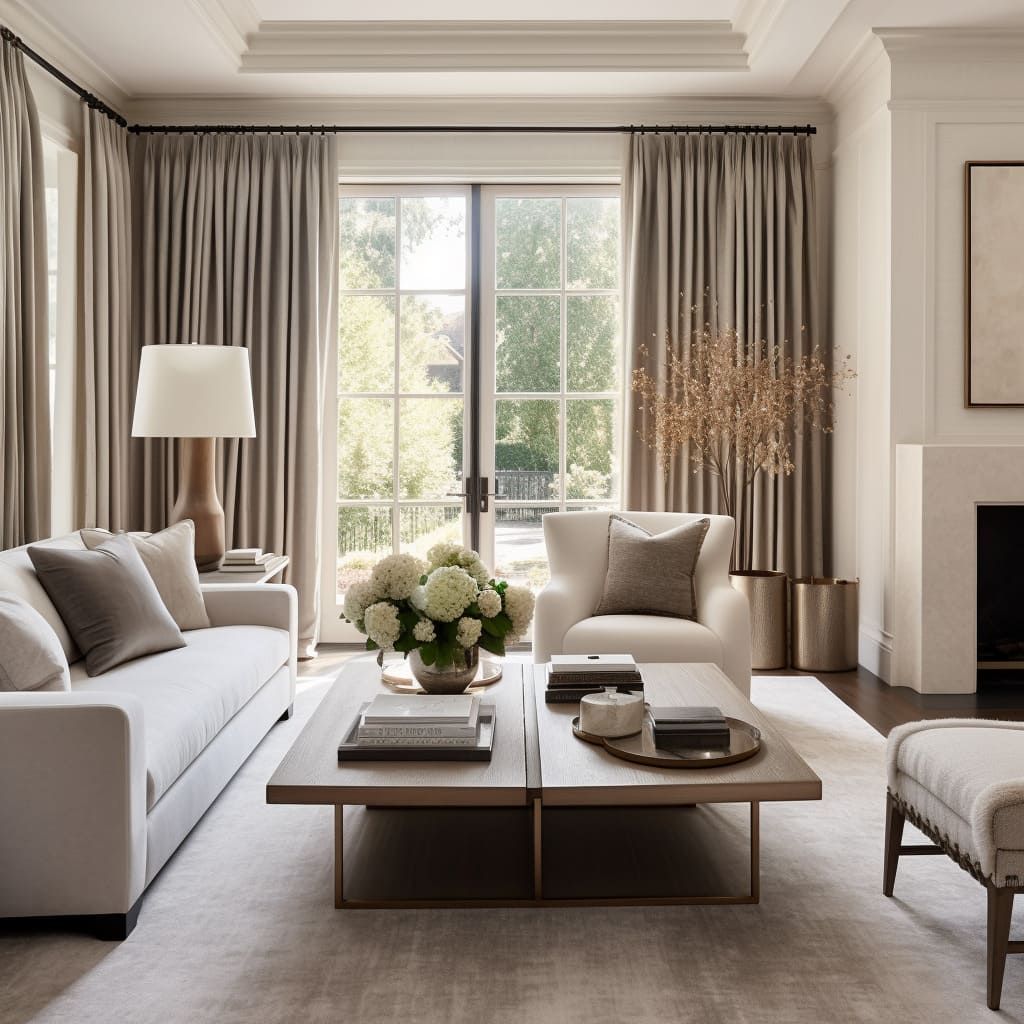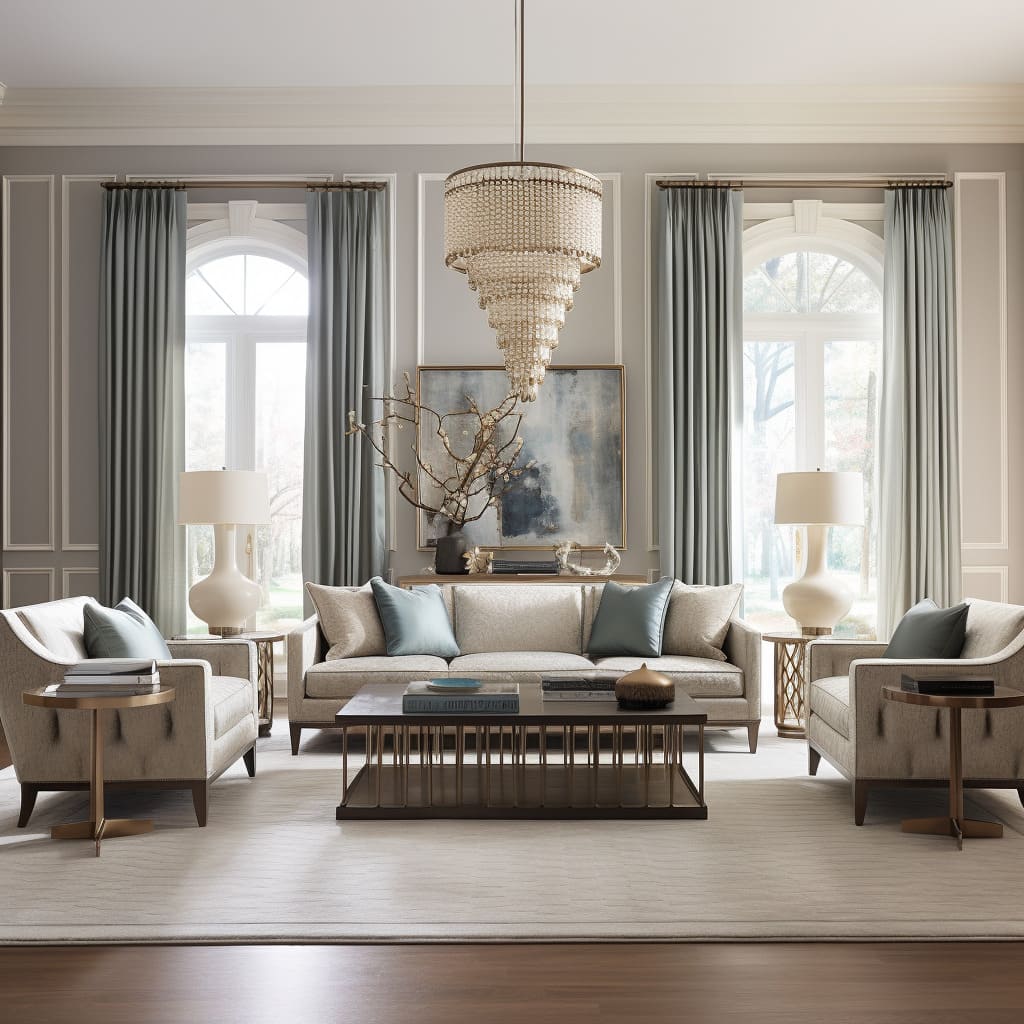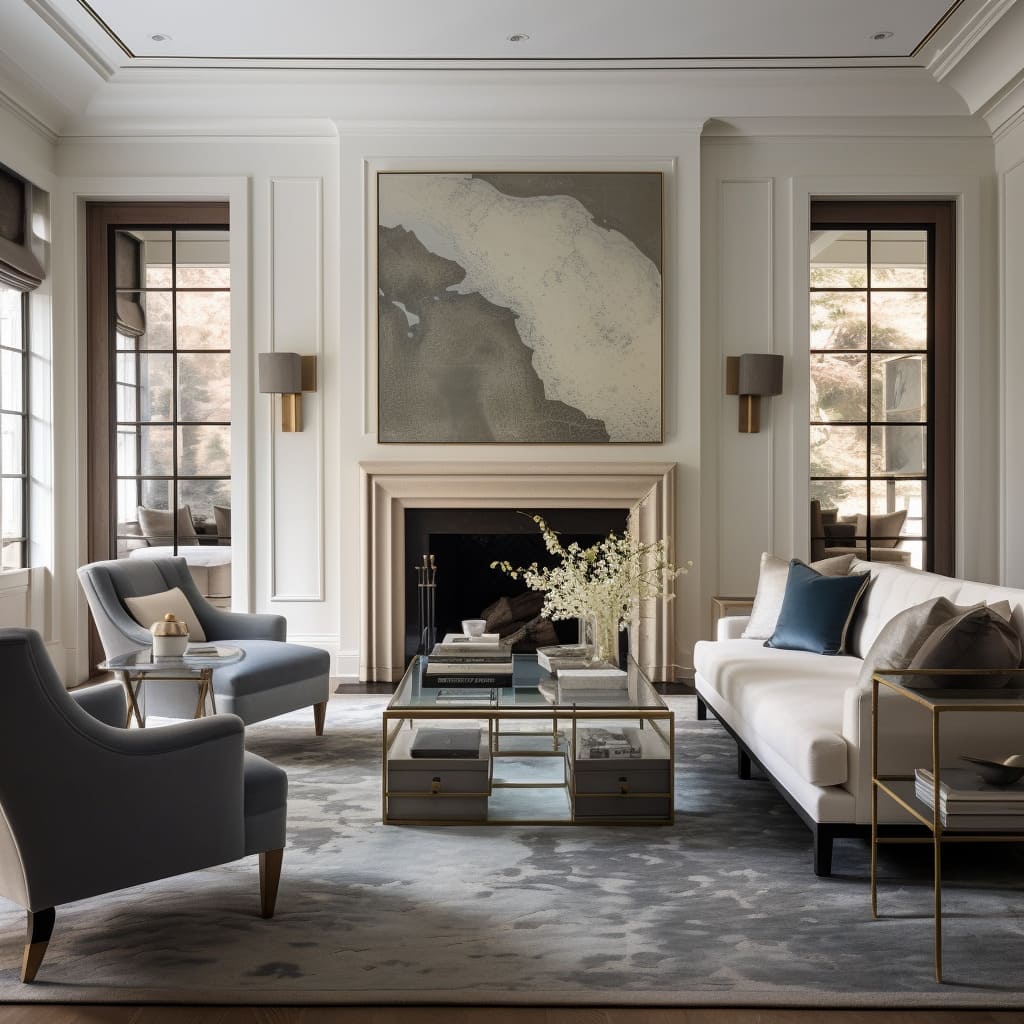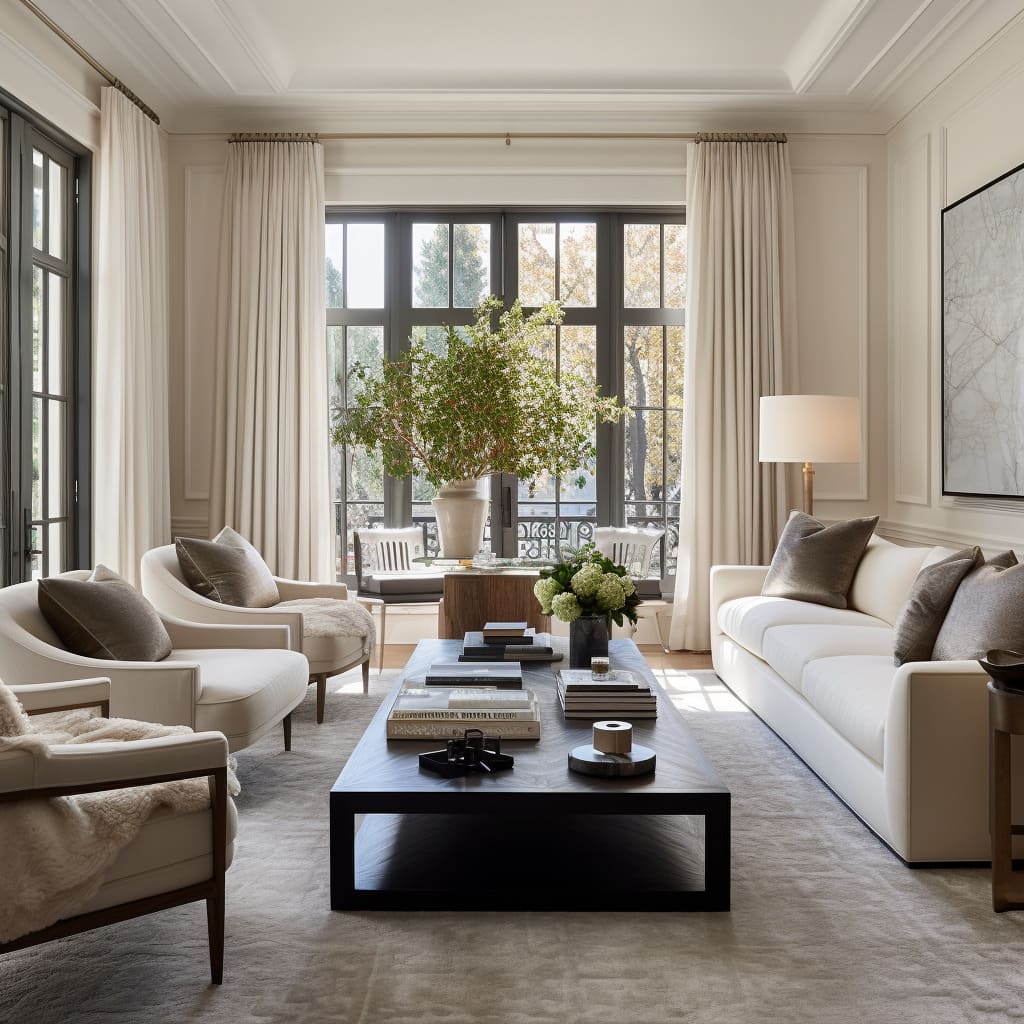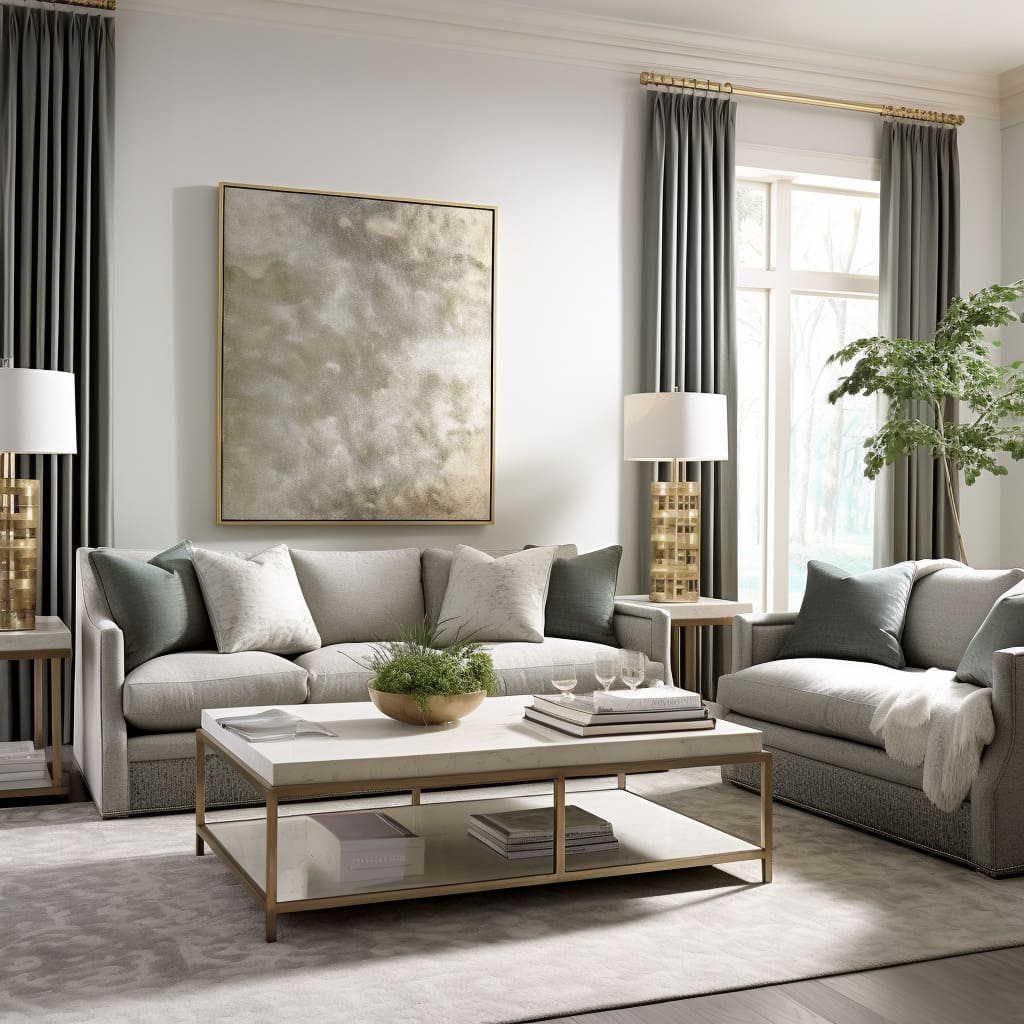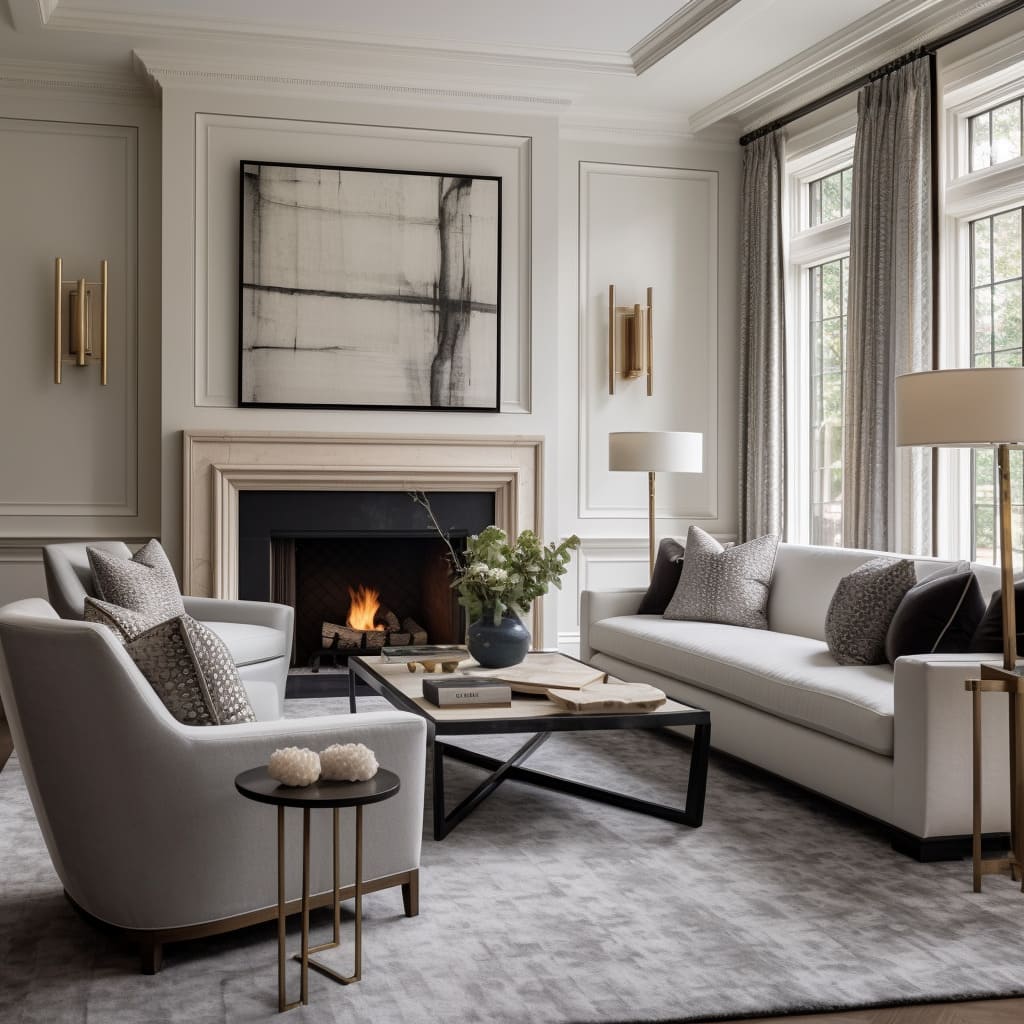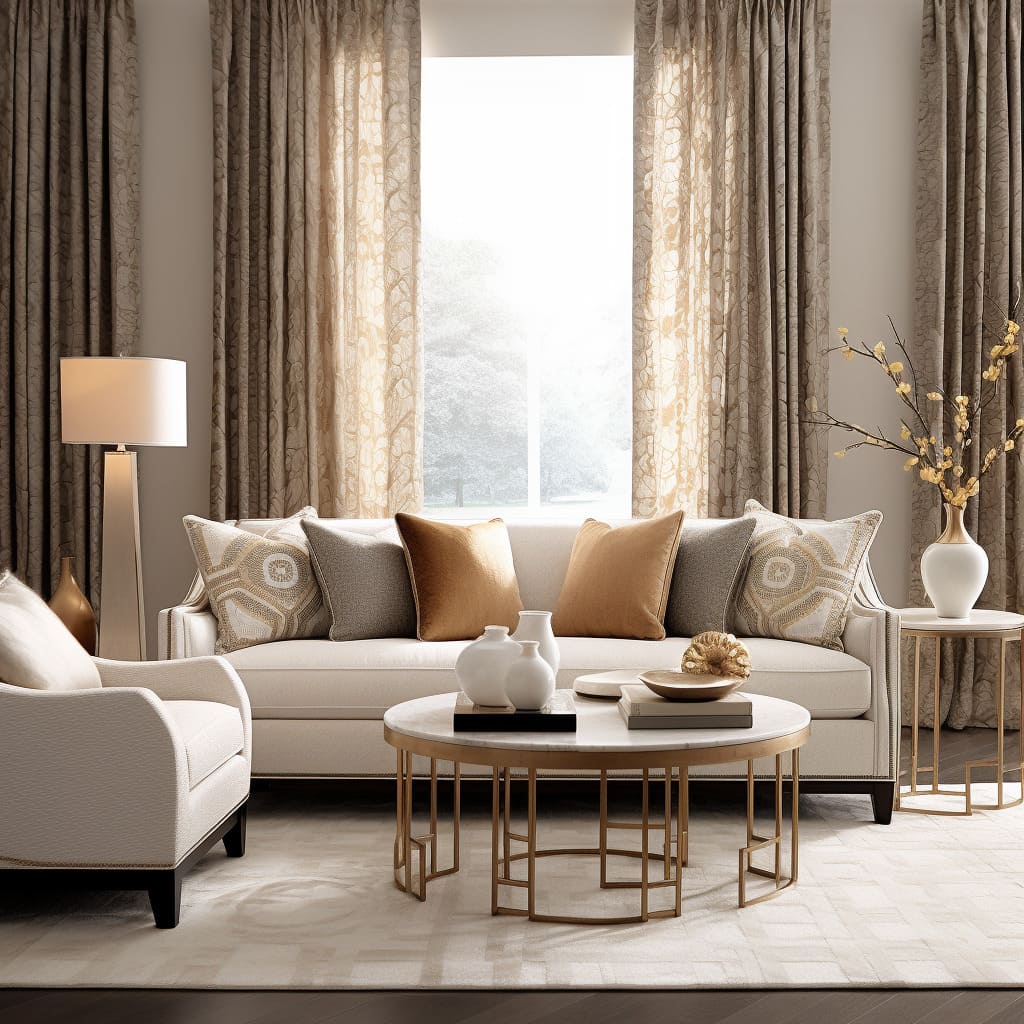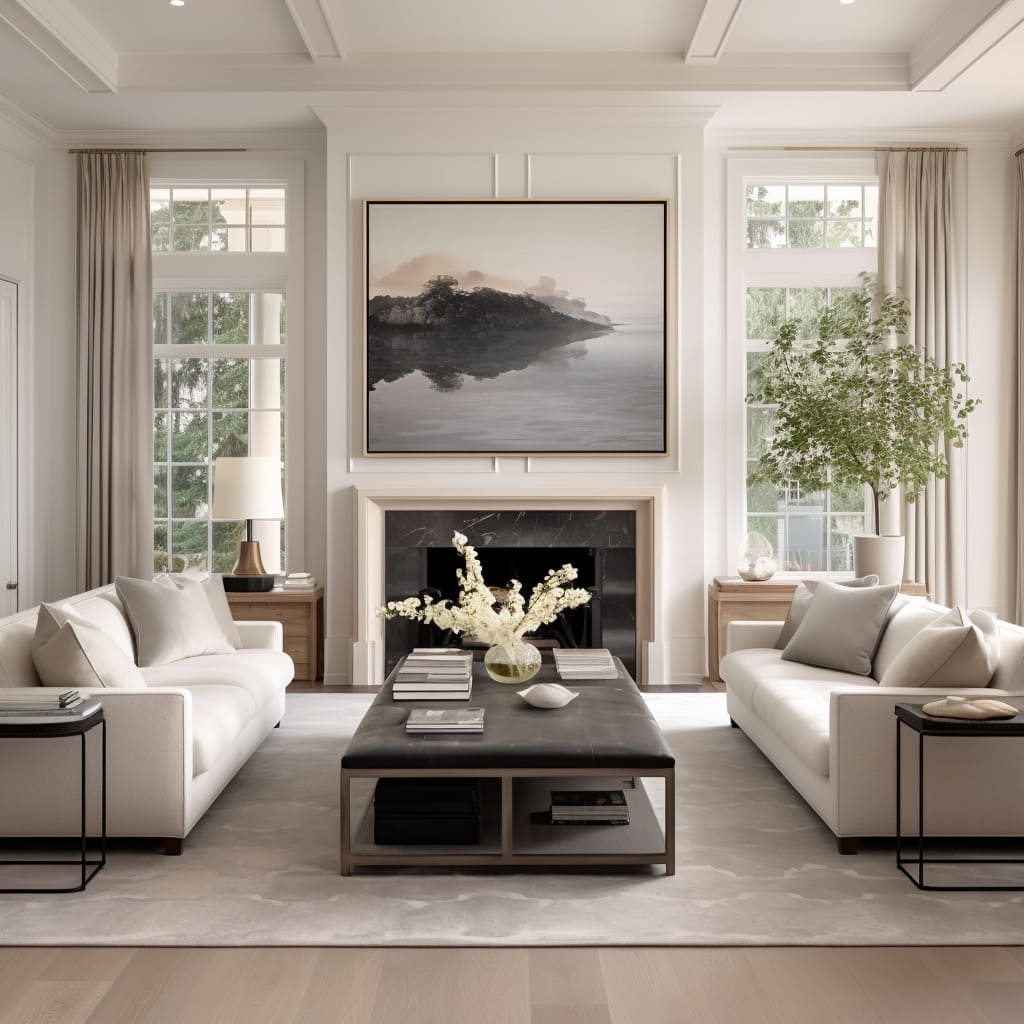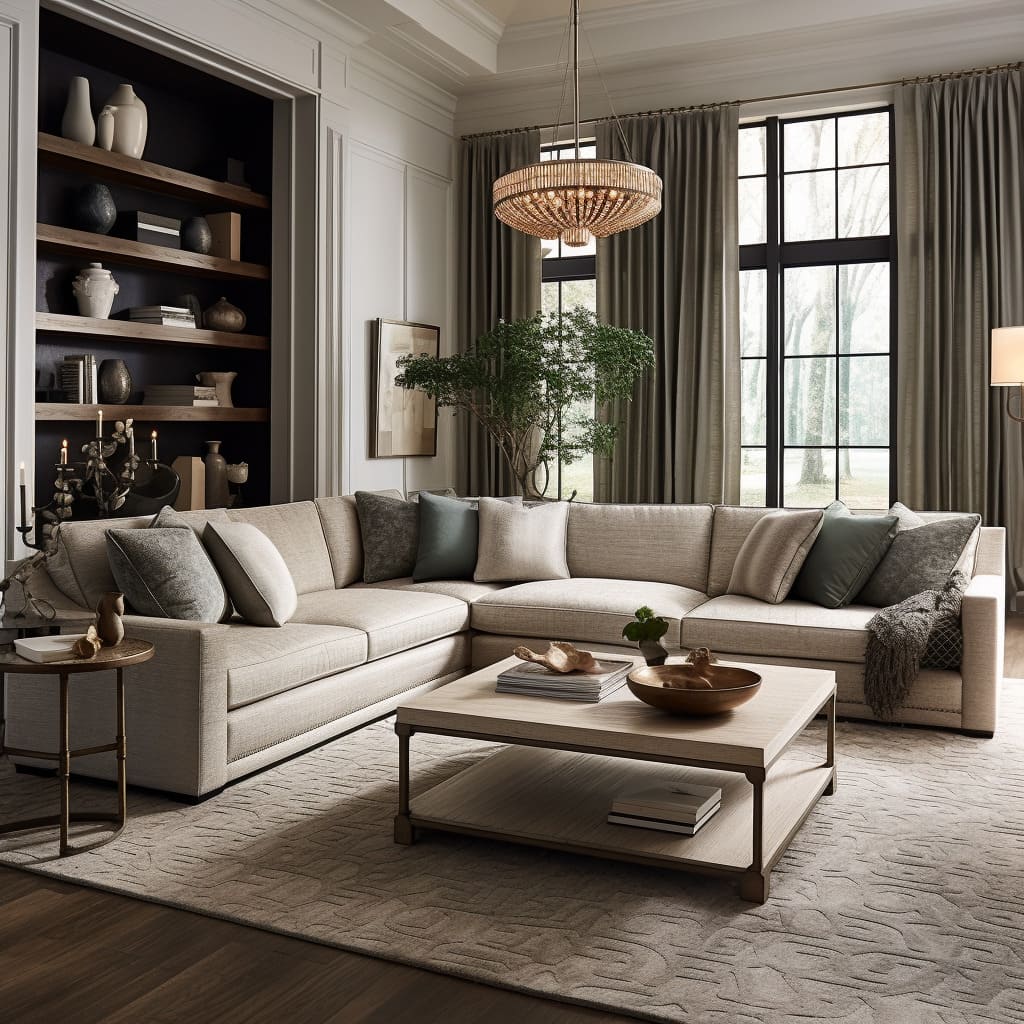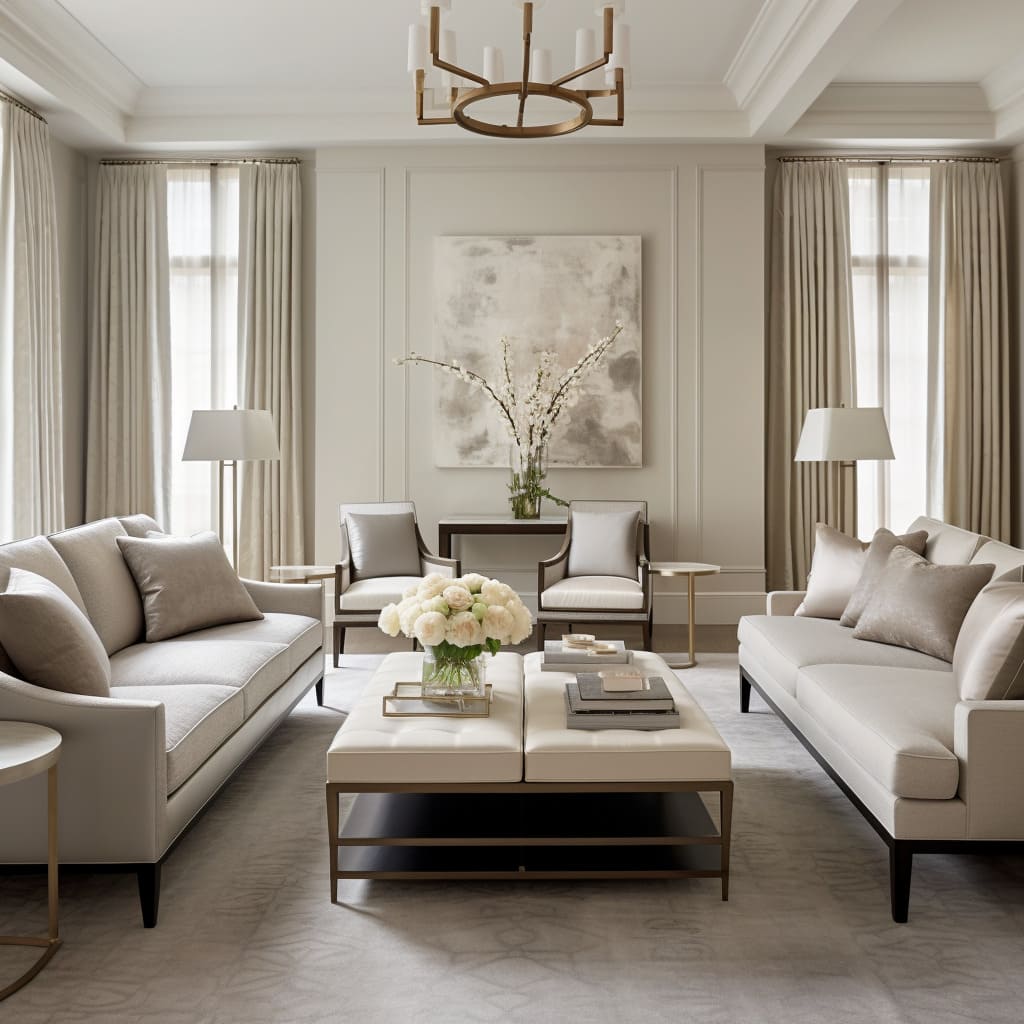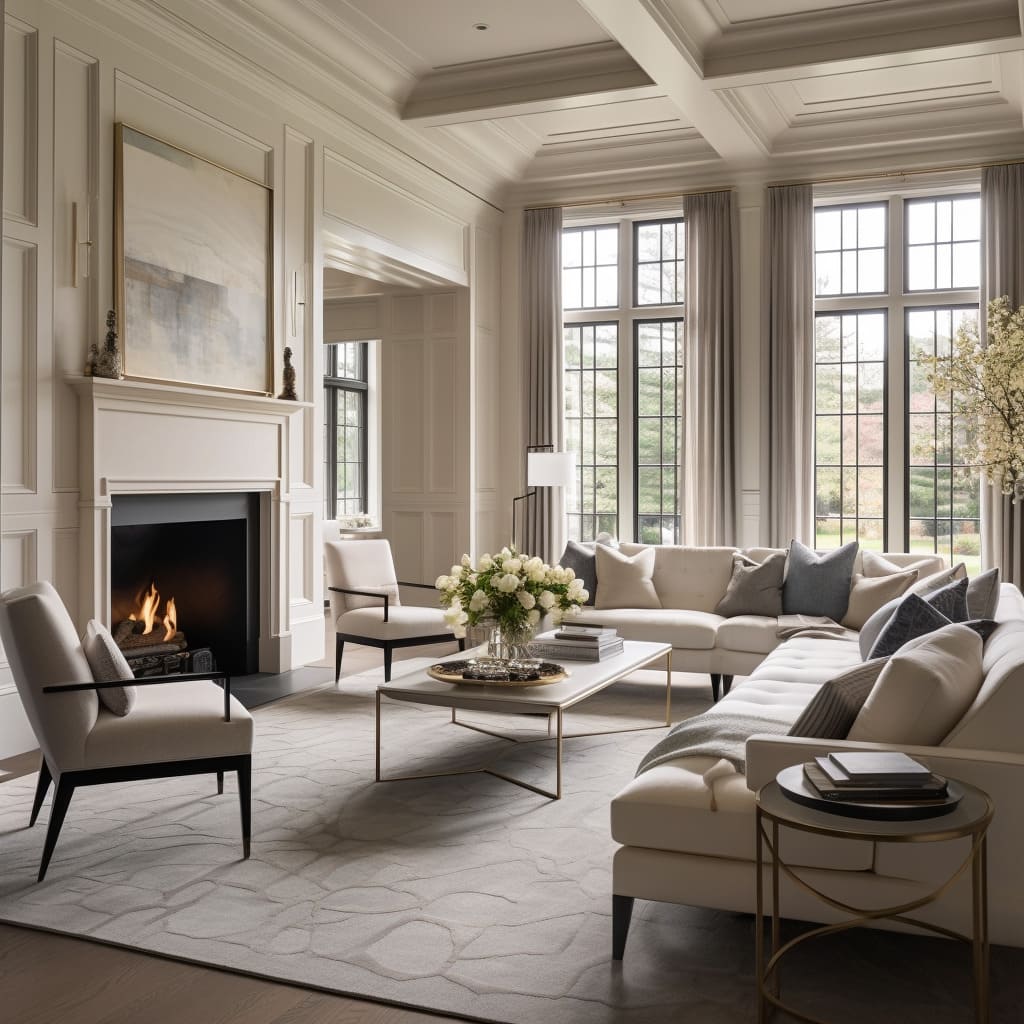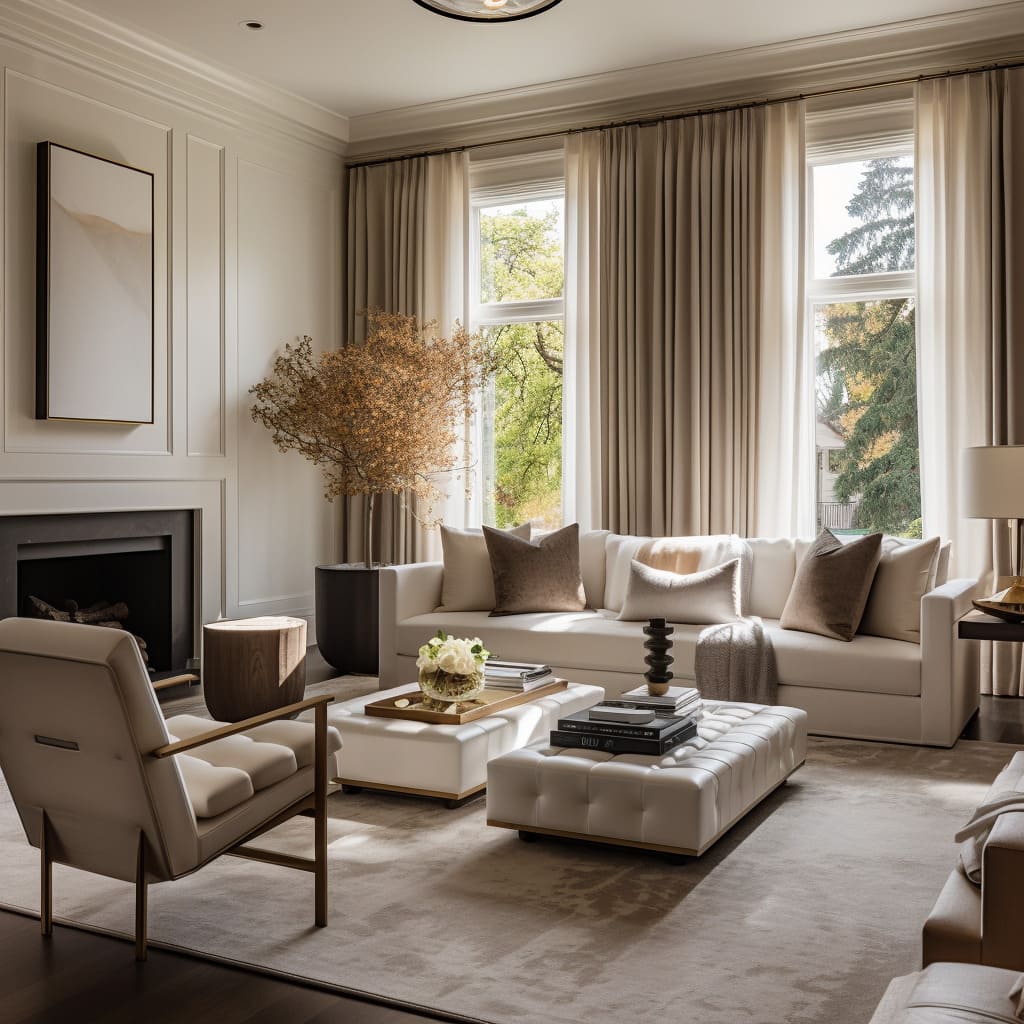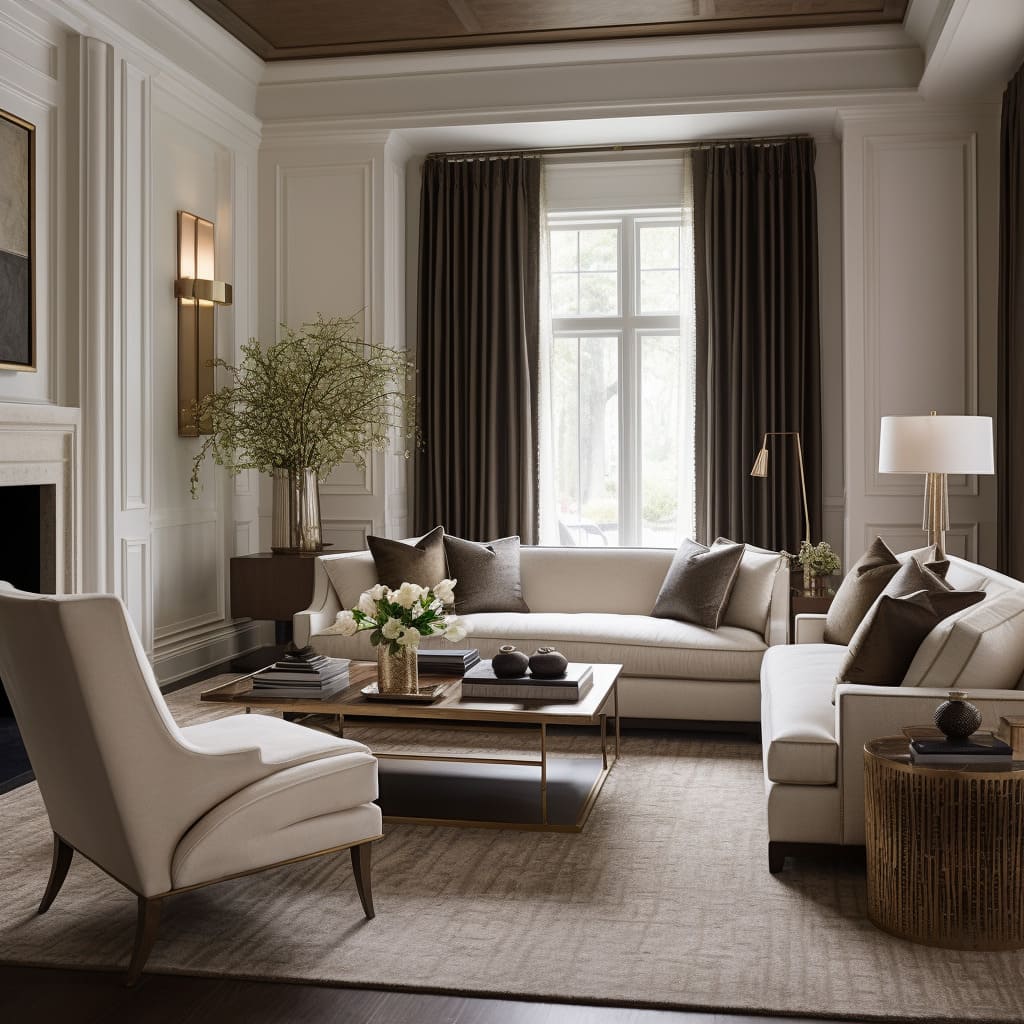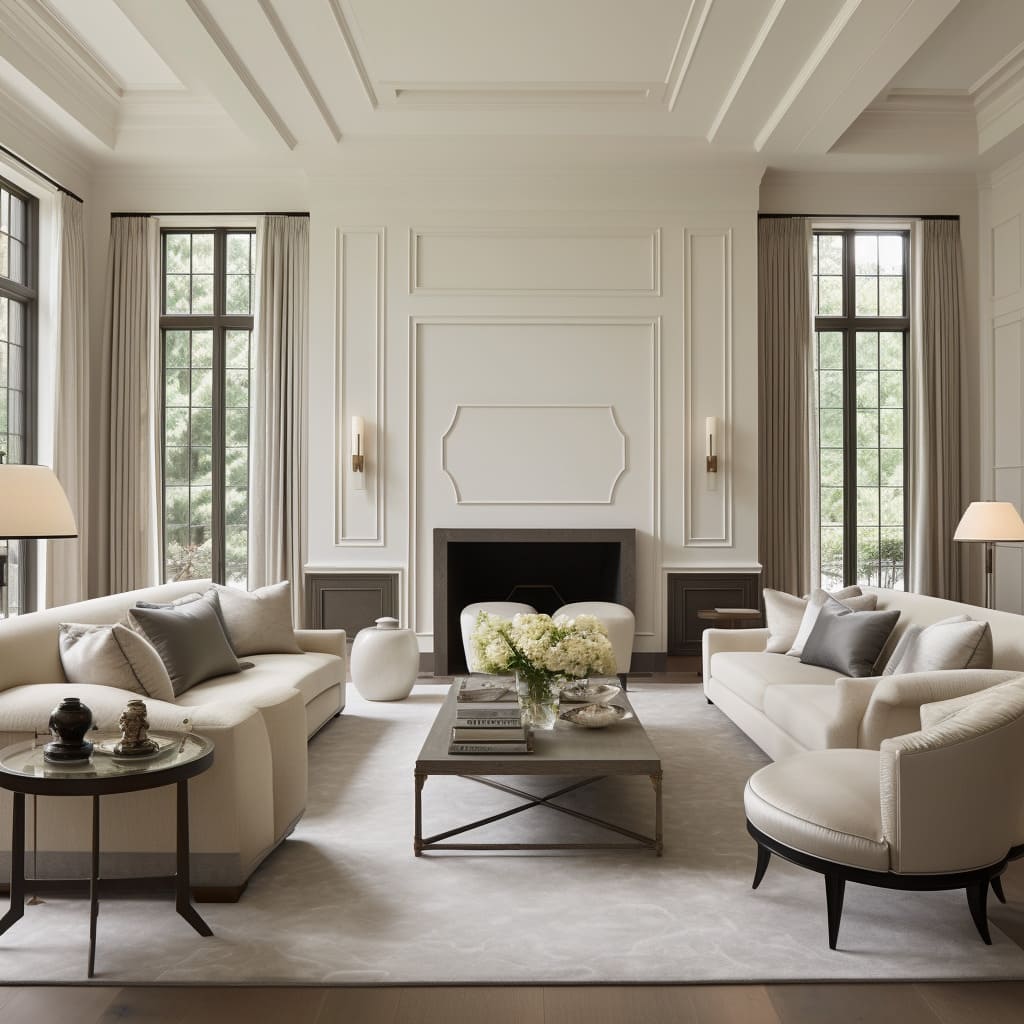American Transitional interior design is a unique style that masterfully blends the warmth and detail of traditional design with the simplicity and sophistication of contemporary aesthetics. This article delves into the defining characteristics of this elegant and timeless style, exploring how it harmoniously integrates various design elements to create spaces that are both luxurious and comfortable.
At the heart of American Transitional design is its emphasis on a balanced use of space, a neutral and sophisticated color palette, and a careful selection of materials and textures. This style stands out for its spacious layouts, enhanced by architectural features like high coffered ceilings and thoughtful lighting.
The color schemes are predominantly neutral, providing a serene backdrop that highlights the richness of materials used, such as plush upholstery, reflective metals, and natural stone.
Furthermore, the article explores how American Transitional design pays meticulous attention to the placement and curation of decorative accents. These elements, ranging from minimalist shelf decor to striking abstract art pieces, add personality and depth without overwhelming the space.
The style’s versatility is evident in its ability to adapt to various settings while maintaining a sense of elegance and cohesiveness. As we delve into the nuances of American Transitional interior design, we uncover a style that is not just about aesthetics but also about creating a space that resonates with comfort, elegance, and timeless appeal.
The Essence of American Transitional Interior Design
American Transitional interior design masterfully merges traditional and contemporary styles, striking a delightful balance. The essence of this style lies in spacious, well-lit environments, often enhanced by large windows that bathe the space in natural light Neutral color palettes dominate, with calming shades of white, beige, and gray, creating an atmosphere of understated elegance.
Furniture in this design scheme blends modern and classic influences, characterized by clean lines and comfortable cushioning. Central to the layout is a contemporary black coffee table, around which seating is arranged to foster a social setting.
Sophistication is further injected through tasteful accent pieces like cream ottomans and distinctive sculptures. A noteworthy feature is the fireplace, often serving as the room’s focal point.
It is typically framed by a minimalist mantel in earth tones, echoing the overall neutral theme.
Over the fireplace, a bold abstract painting might feature, offering a striking contrast with its darker hues. Adjacent to the fireplace, built-in shelving adds both functionality and aesthetic appeal.
These shelves are minimally decorated, emphasizing a clutter-free, serene environment.
Brightening the American Transitional Space
Lighting and reflective surfaces play a pivotal role in American Transitional interior design, creating a warm and welcoming ambiance. Central to this concept is a striking circular chandelier, often with a metallic finish.
This fixture, simple yet elegant, is not just a light source but also a statement art piece.
Its golden hues infuse warmth into the space, harmonizing with the transitional style. Layered lighting is another key aspect, achieved through strategically placed table lamps.
These lamps typically feature a classic design, with a black base and white shade, offering a striking contrast to the neutral color scheme.
This contrast adds depth and interest to the space, ensuring light reaches every corner of the room. Reflective surfaces are integral to this design approach.
A large mirror or glossy artwork, often positioned above the fireplace, reflects light, enhancing the sense of space. Coffee and side tables with reflective tabletops also contribute to this effect.
Not only do they help distribute light throughout the room, but they also add a sleek, modern touch. This modernity contrasts pleasingly with the softer textures of sofas and rugs.
Architectural Grace and Spacious Harmony
In American Transitional interior design, architectural elements and spatial arrangement are key. High coffered ceilings are a standout feature, lending a sense of grandeur and airiness to the space.
These ceilings are more than just visually impressive; they also improve acoustics and the overall sense of spaciousness.
The white paint of the coffers contrasts with the room’s muted wall tones, drawing the eye upward and enhancing the perception of an expansive area. Wainscoting on the walls introduces texture and a classic element, subtly enriching the transitional style.
The moldings, though understated, create an elegant backdrop for the room’s furniture and décor. This wainscoting, painted in the same neutral shades as the rest of the room, ensures a harmonious and cohesive feel.
The flooring features wide-plank hardwood, adding warmth and natural texture that complements the neutral color scheme. A large rug, extending under all main seating, unites these elements, providing comfort and softness underfoot.
The furniture layout is meticulously planned to encourage conversation and facilitate easy movement. There’s a balance in the proportion and scale of furnishings, with large sofas and a sizable coffee table fitting seamlessly into the spacious setting.
Furniture is arranged to face the fireplace, emphasizing it as the room’s natural centerpiece and gathering spot.
Color and Material in Transitional Design
The sophisticated color scheme and material palette are central to its luxurious, timeless appeal. The color scheme is predominantly neutral, featuring shades of white, cream, beige, and soft grays.
This monochromatic approach provides a serene and refined backdrop, with subtle hue variations adding depth and visual interest. It acts as an ideal canvas to accentuate the textures and materials present in the space.
The materials are selected for their texture and quality, enhancing the tactile experience. Plush upholstery on sofas offers a relaxing contrast to the smooth surfaces of coffee and side tables.
Stone elements around the fireplace introduce a natural touch, anchoring the space, while the soft, velvety texture of the rugs adds comfort and warmth underfoot. Metal accents in lighting fixtures and furniture bring a reflective quality, contrasting with the matte finishes on walls and soft furnishings.
The warm, golden tones of these metal elements harmonize with the wooden floors, bridging the warm and cool elements of the room through a shared warm undertone. This thoughtful combination of colors and materials is quintessential to the transitional style.
It represents a seamless fusion of traditional comfort and warmth with the clean lines and understated elegance of contemporary design.
Subtle Elegance: Decorative Accents
The art of curation and placement of decorative accents is crucial. These décor items are thoughtfully selected and arranged to enhance the room’s elegance without overwhelming it.
They add personality and visual interest, while preserving the space’s cohesive and tranquil atmosphere.
Decorations on shelves and surfaces adhere to a minimalist approach. Each piece, be it small sculptures, decorative bowls, or books, is chosen for its artistic value and alignment with the room’s aesthetic.
These items often feature organic shapes and varied textures, providing an intriguing contrast to the clean lines of the furniture and the room’s structured layout.
Artwork, especially above the fireplace, serves as a significant decorative accent. Its abstract design in a monochromatic palette introduces a modern flair and acts as a focal point, yet it harmonizes with the room’s relaxed vibe.
This art complements the neutral tones around it, drawing attention without overpowering. The selection of florals and plants is equally deliberate, with simple yet elegant arrangements that bring a touch of organic softness.
Tall vases and planters are used to add height and natural beauty.
In summary, decorative accents in transitional design are employed sparingly and thoughtfully. Each piece contributes to the room’s luxurious feel, achieving a perfect balance that is essential in transitional style.
The décor is neither excessive nor sparse, but just right to enhance the space’s elegance and harmony.
In conclusion, American Transitional interior design represents a harmonious blend of traditional and contemporary elements, creating spaces that are both elegant and welcoming.
Its defining features include a balanced use of space, sophisticated color schemes, and thoughtful integration of architectural elements.
The design’s strength lies in its ability to merge the comfort and warmth of traditional styles with the clean, understated elegance of modern aesthetics.
The careful selection and placement of lighting, reflective surfaces, and decorative accents play a pivotal role in enhancing the room’s ambiance without sacrificing functionality.
The use of neutral color palettes, combined with rich textures and quality materials, contributes to a serene and sophisticated environment. Meanwhile, the strategic arrangement of furniture and decor items ensures a cohesive and tranquil atmosphere.
Each aspect of American Transitional interior design, from the high coffered ceilings to the curated decorative accents, works in concert to create a space that is both luxurious and livable. It is this balance and attention to detail that make the transitional style so appealing and enduring.
In conclusion, this exploration of interior design demonstrates how a thoughtful and innovative approach can transform living spaces into areas that are not only visually stunning but also deeply functional and harmonious.
From the strategic use of lighting and color to the meticulous arrangement of furniture and the embrace of open-concept layouts, each aspect contributes to creating environments that are both inviting and reflective of modern living standards.

